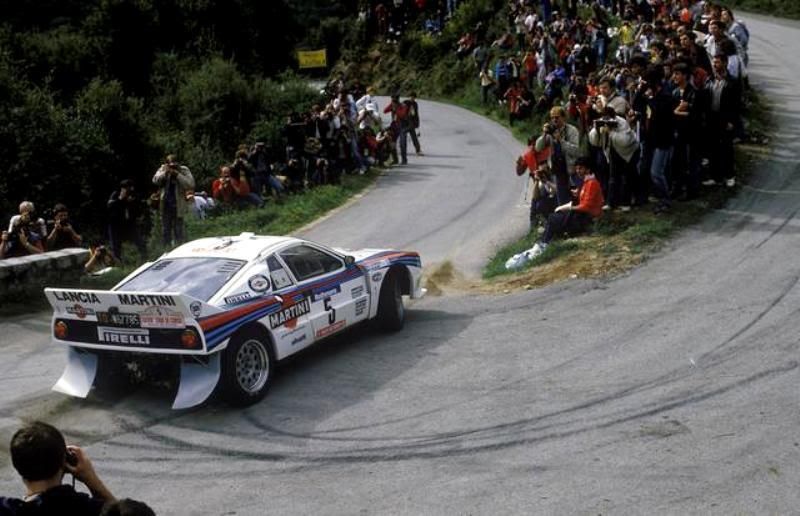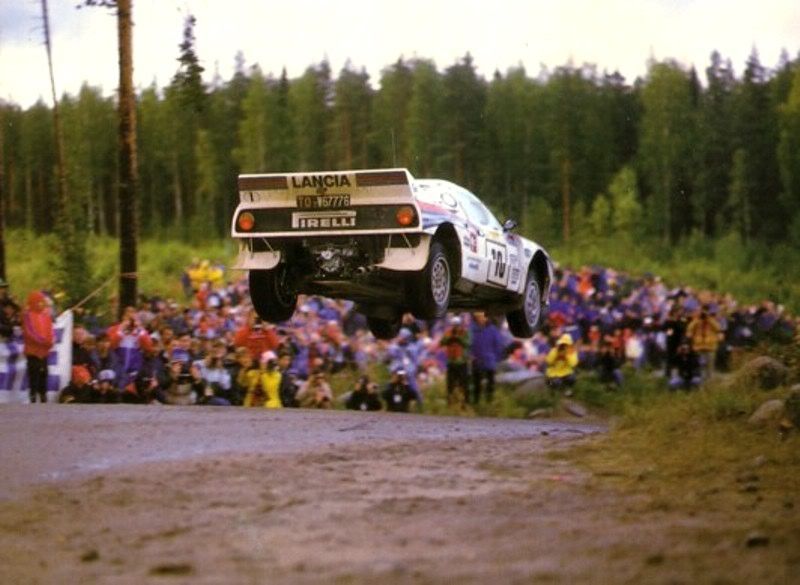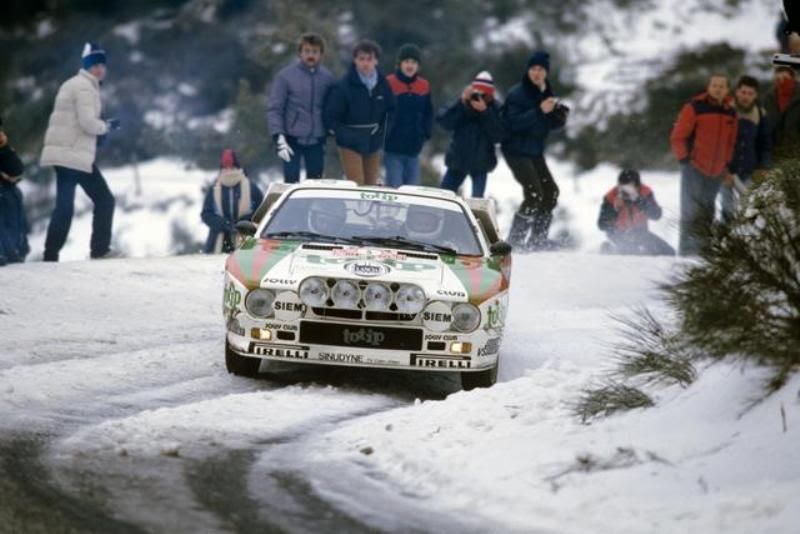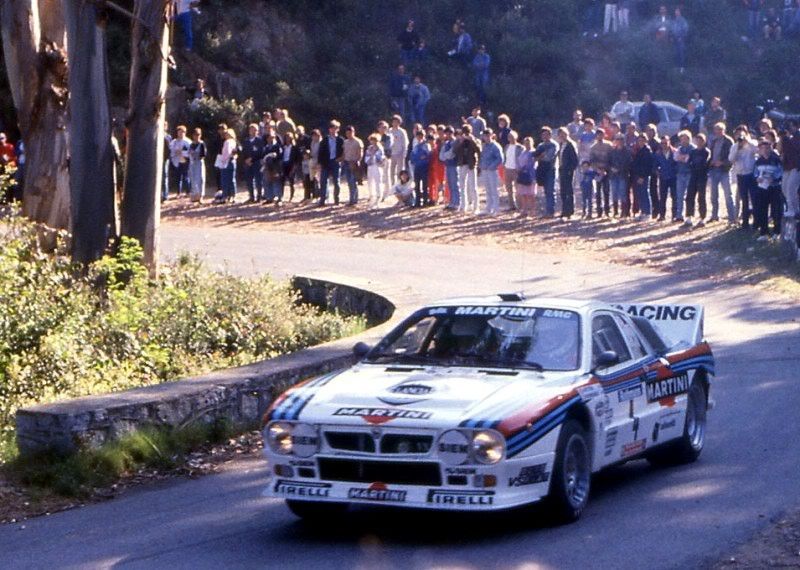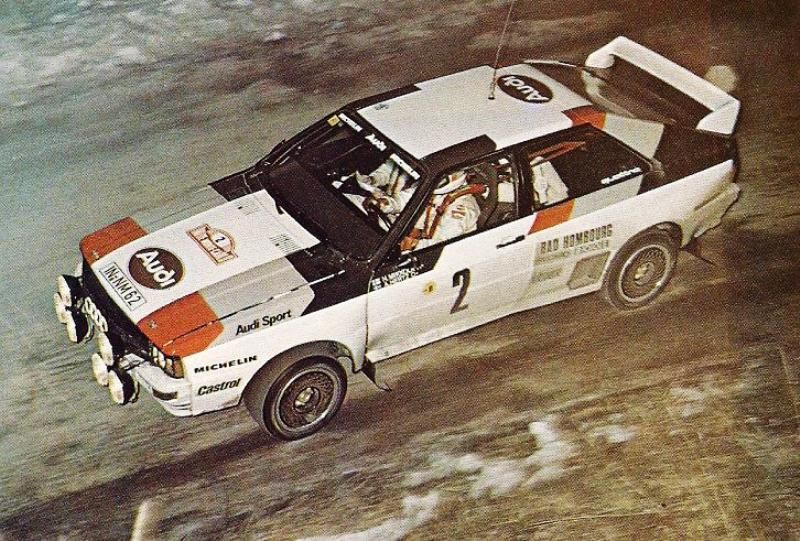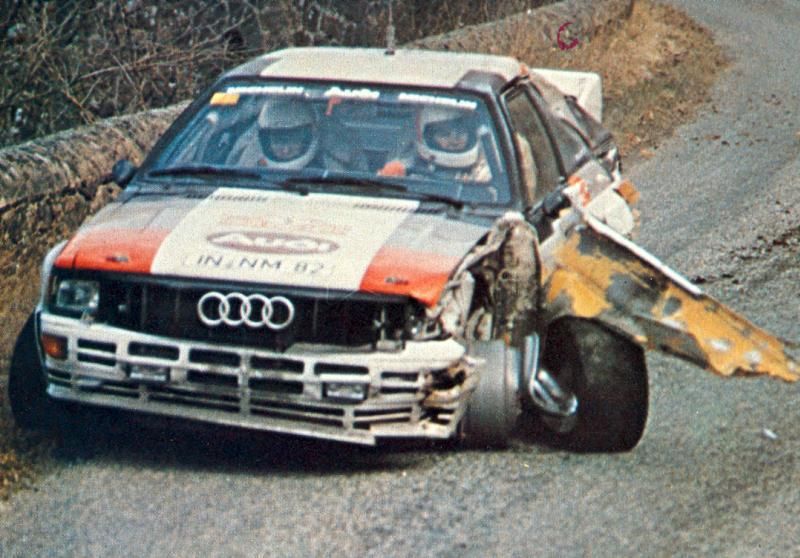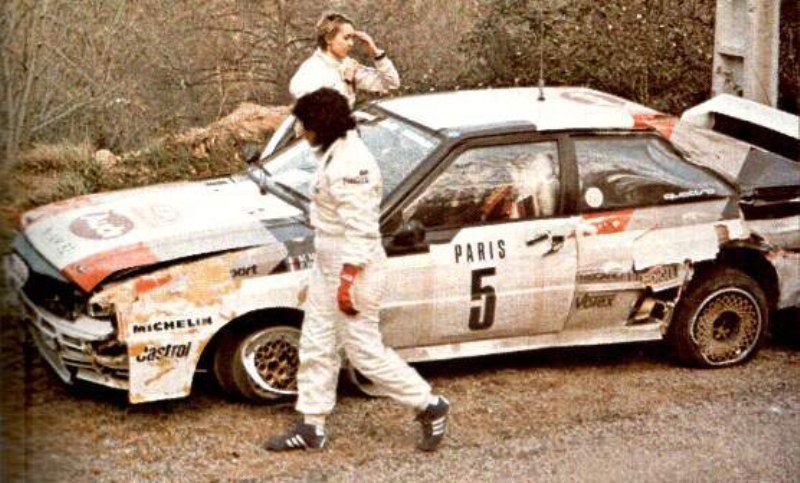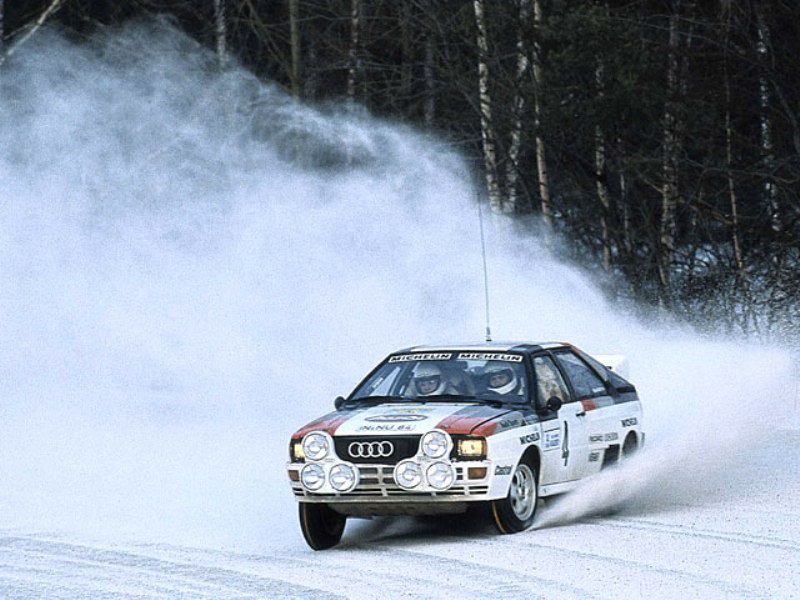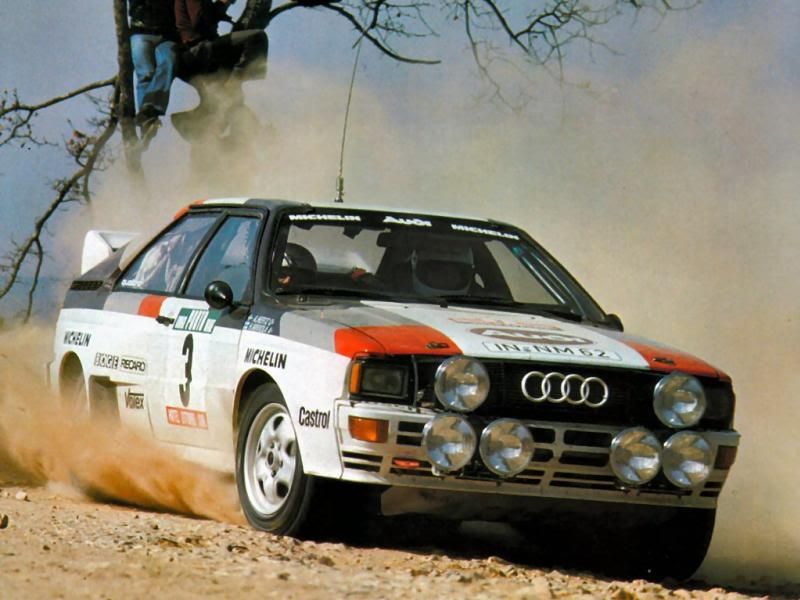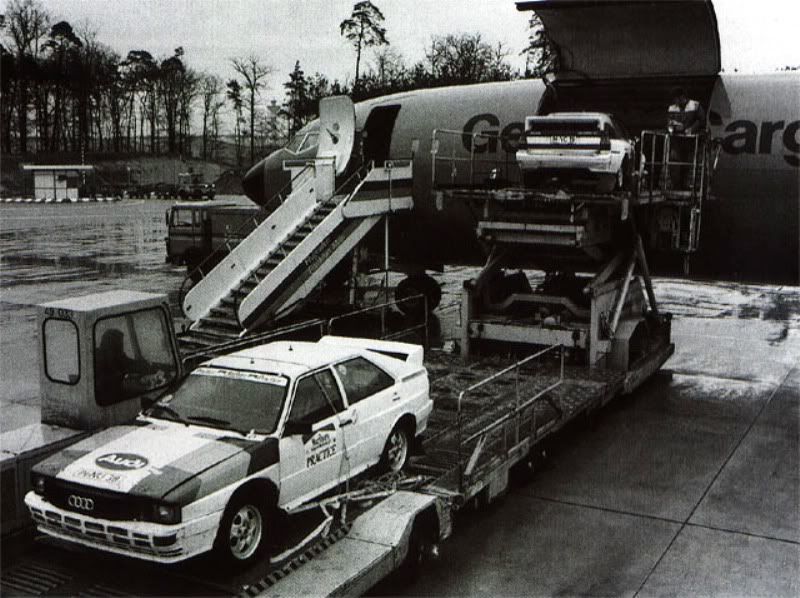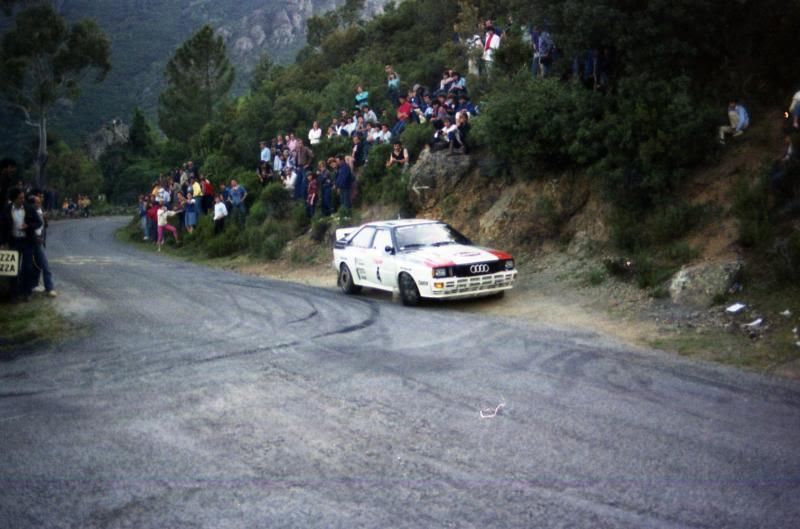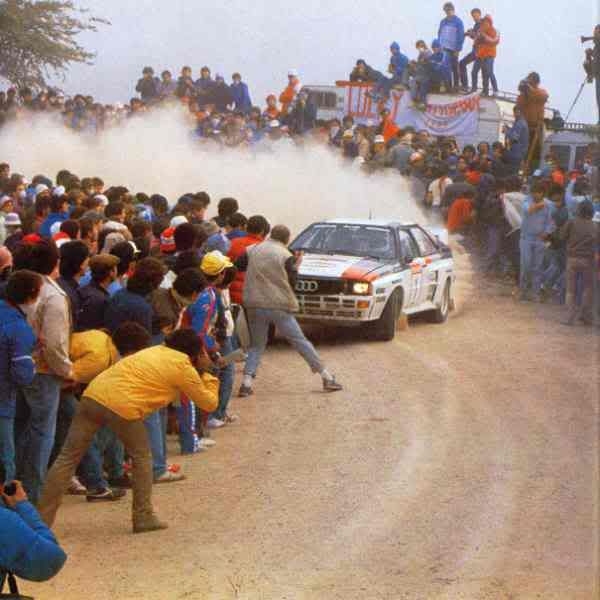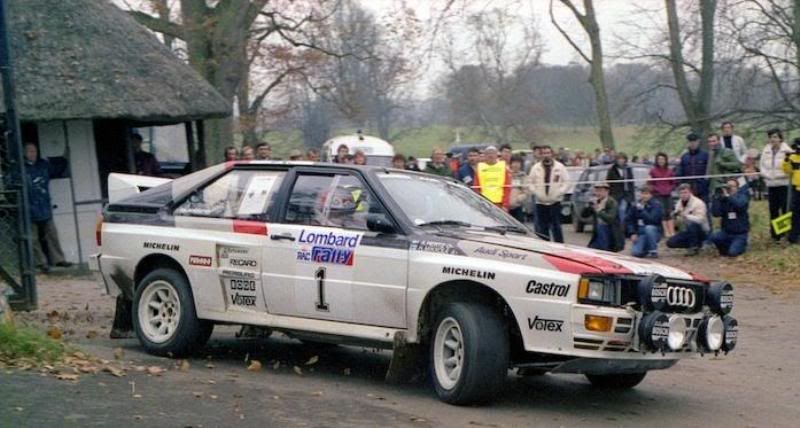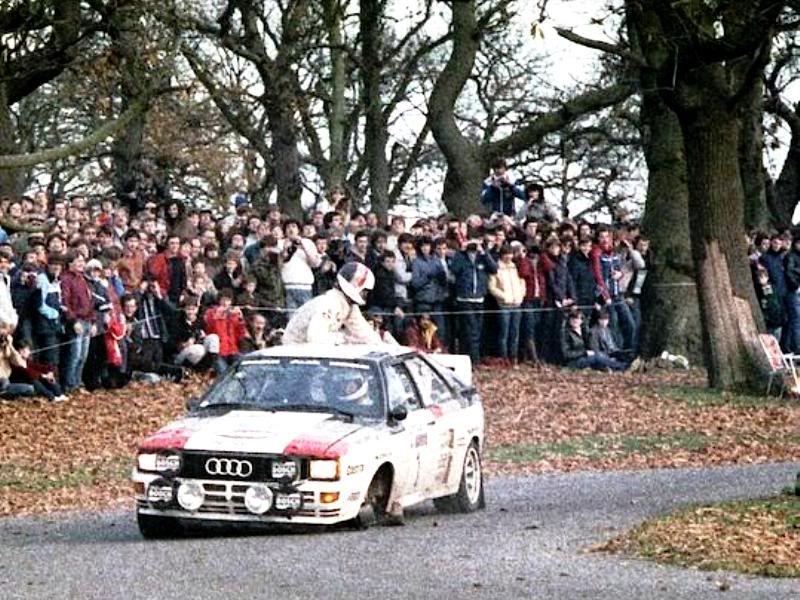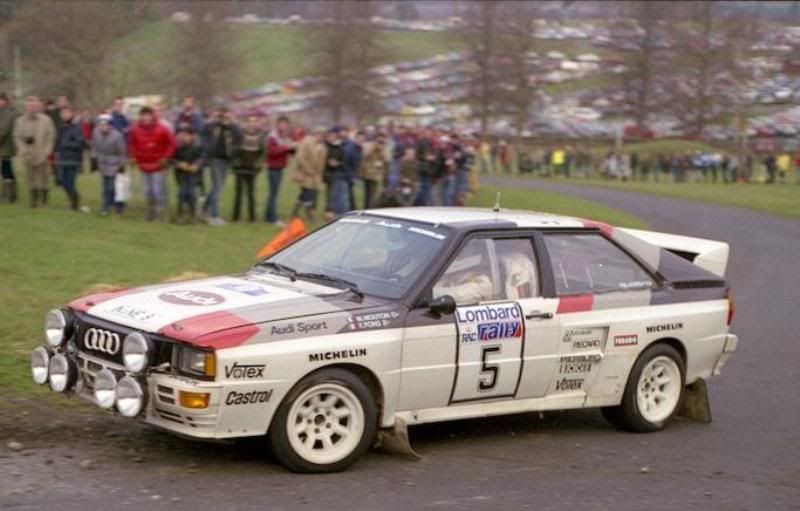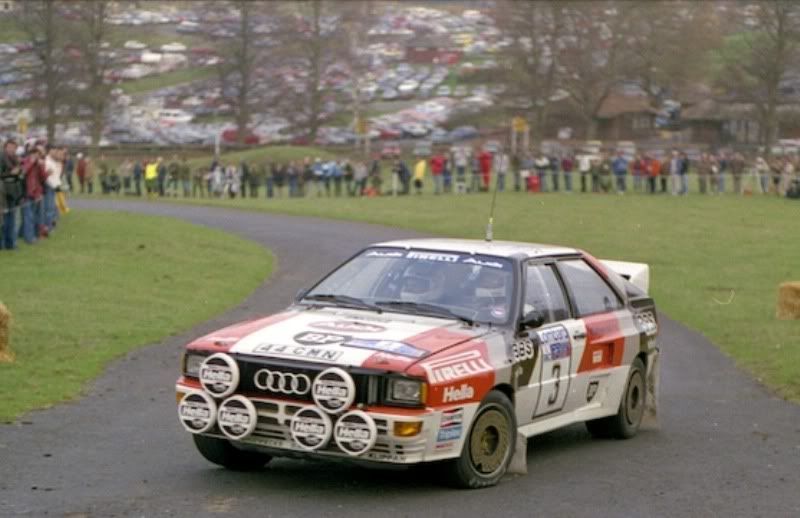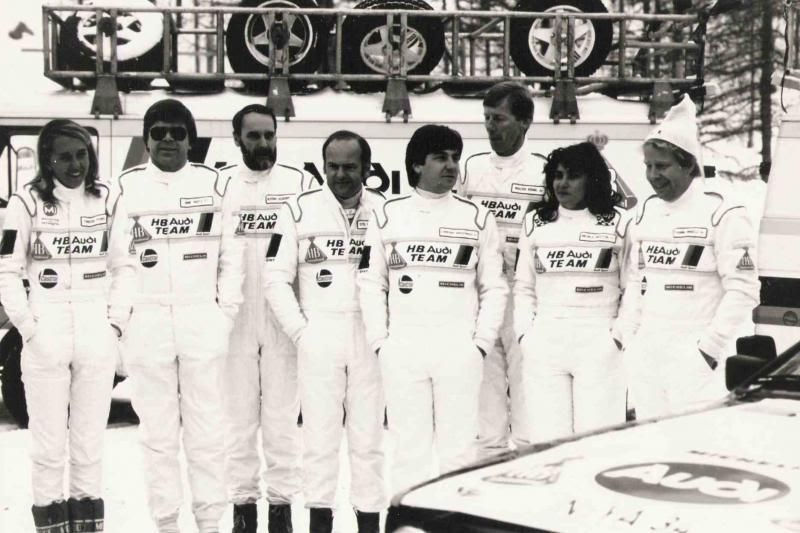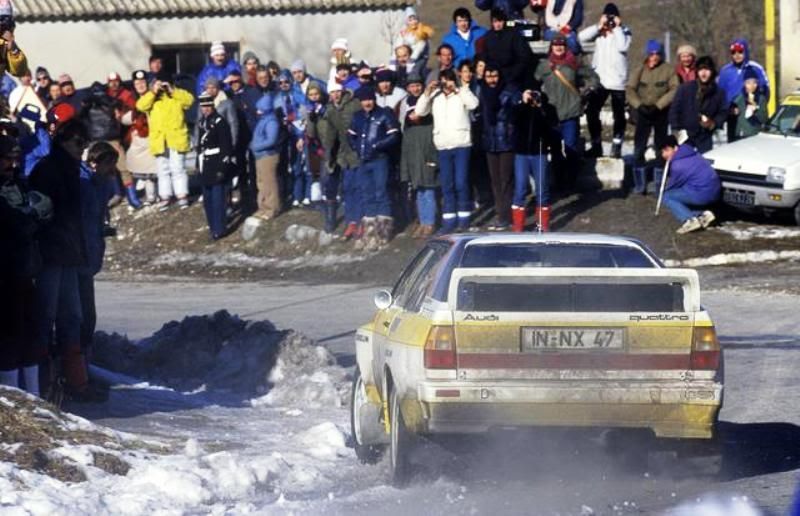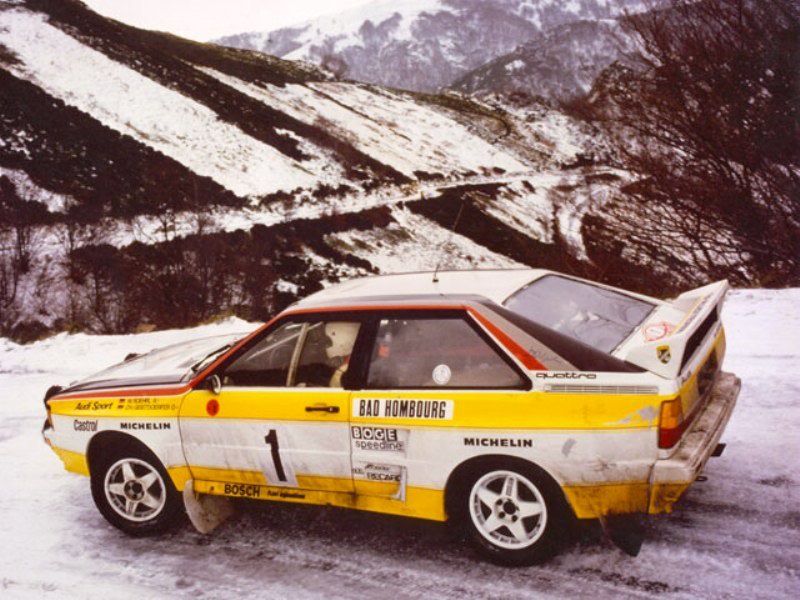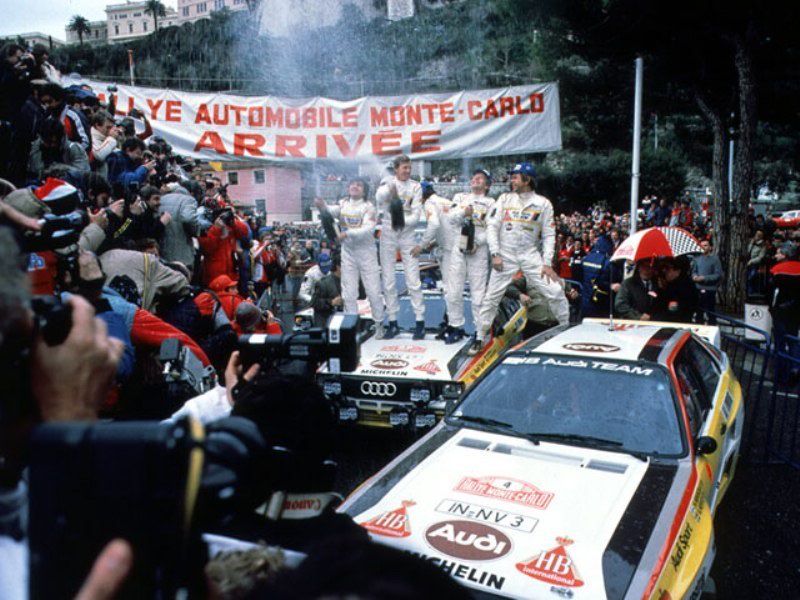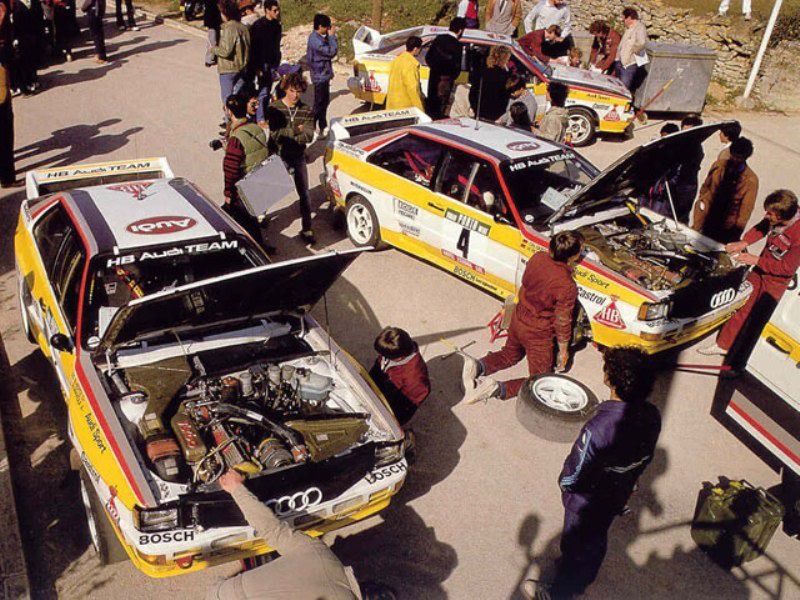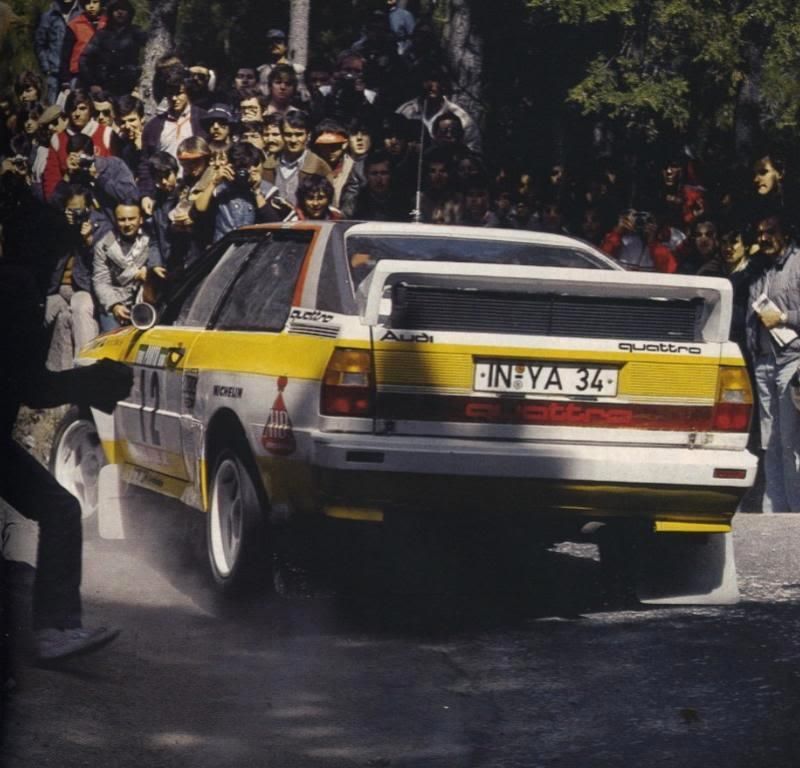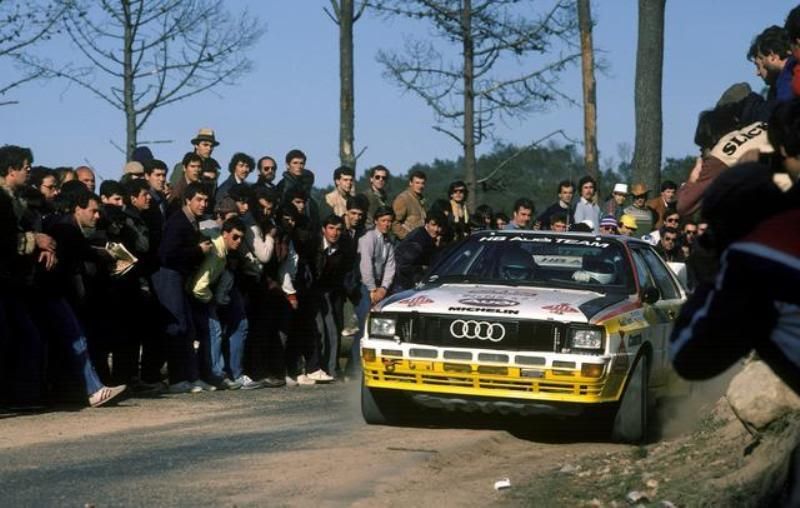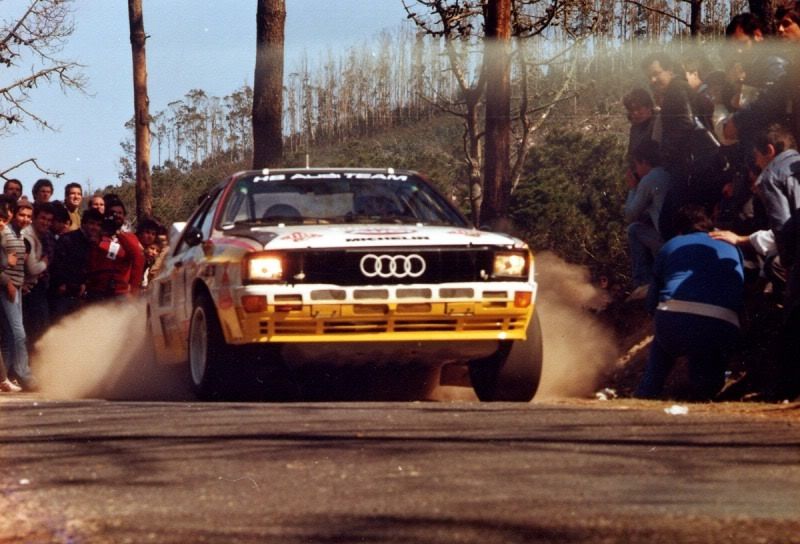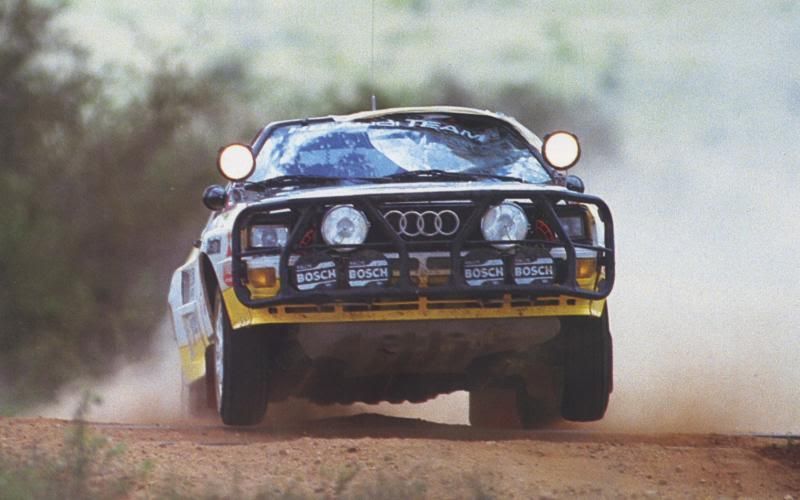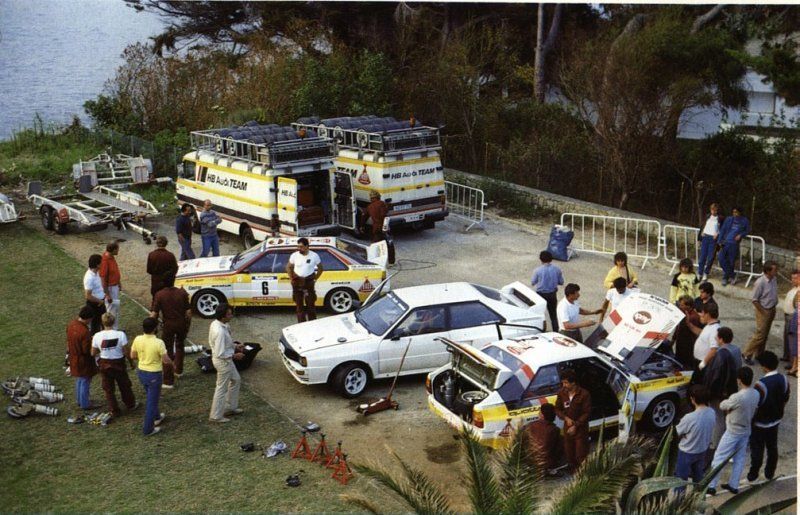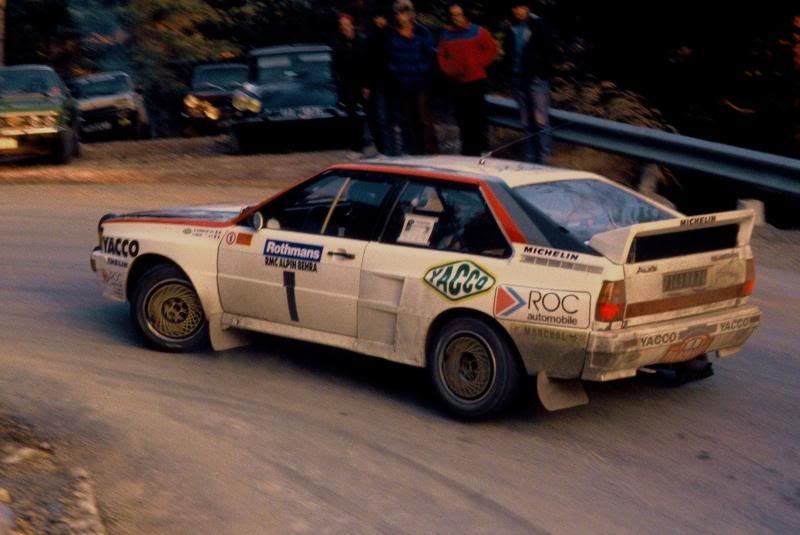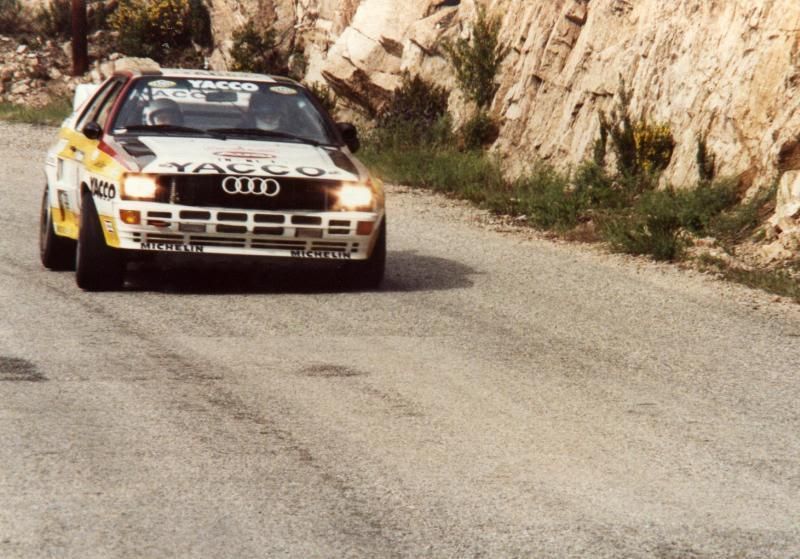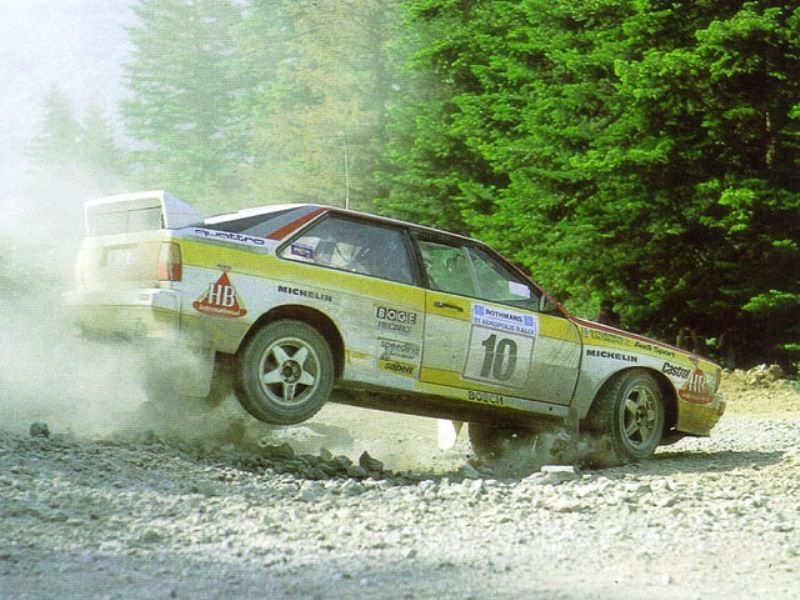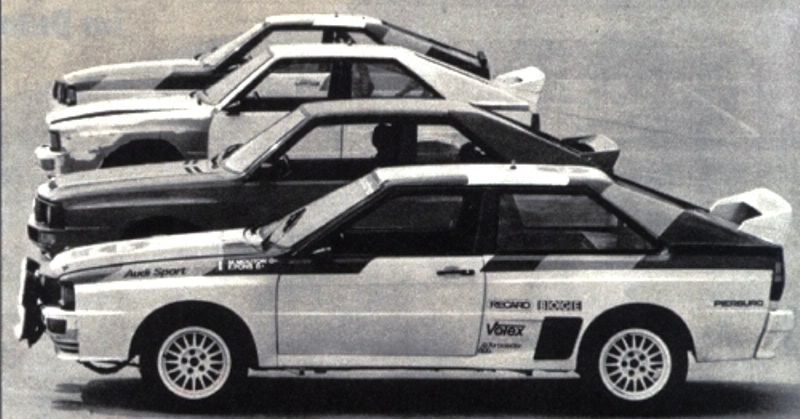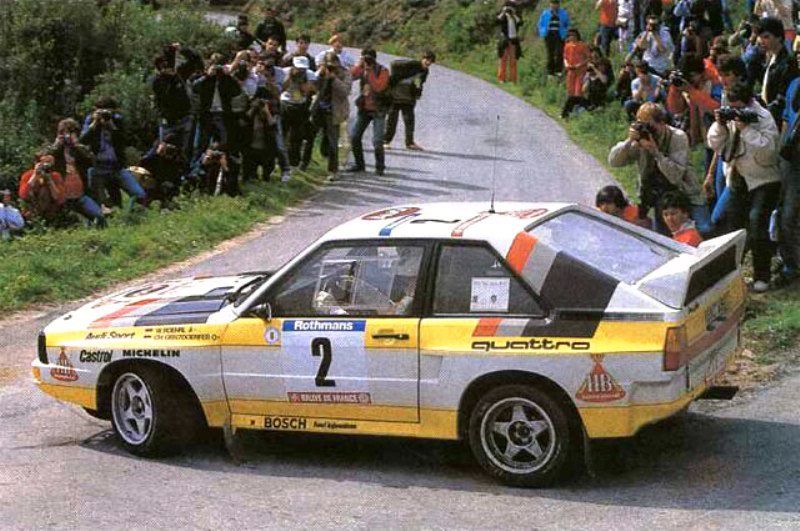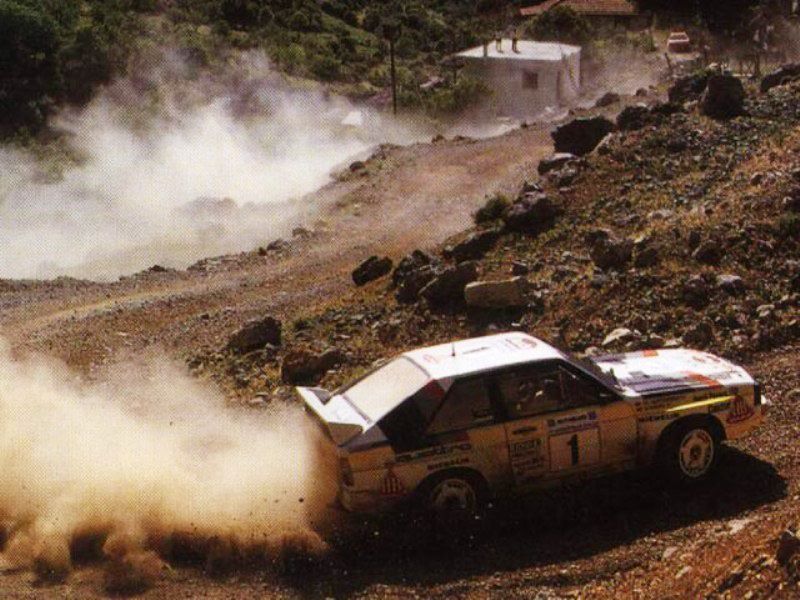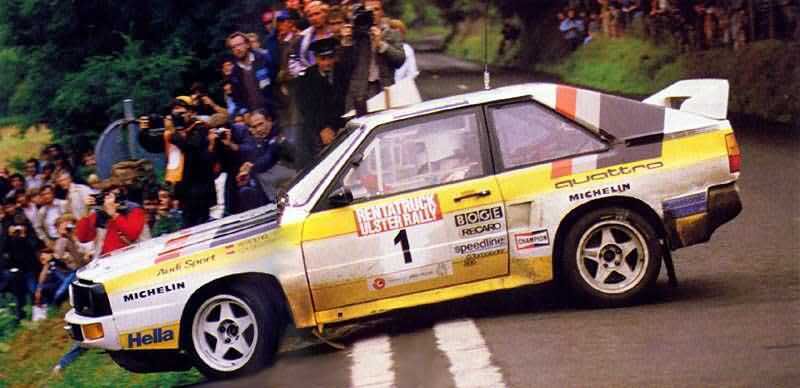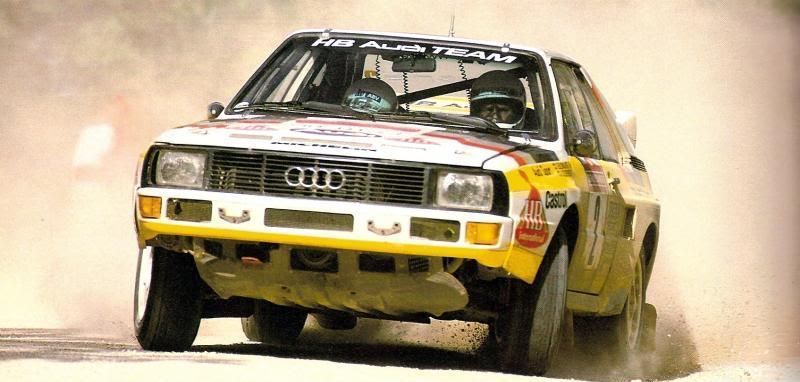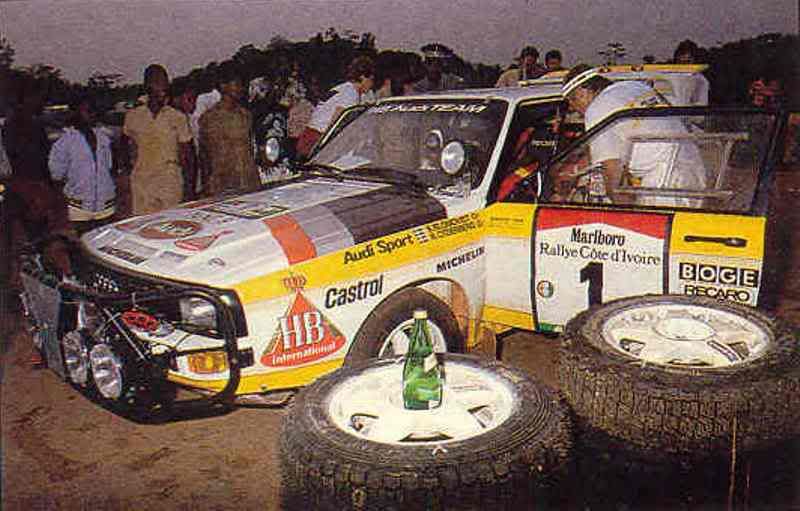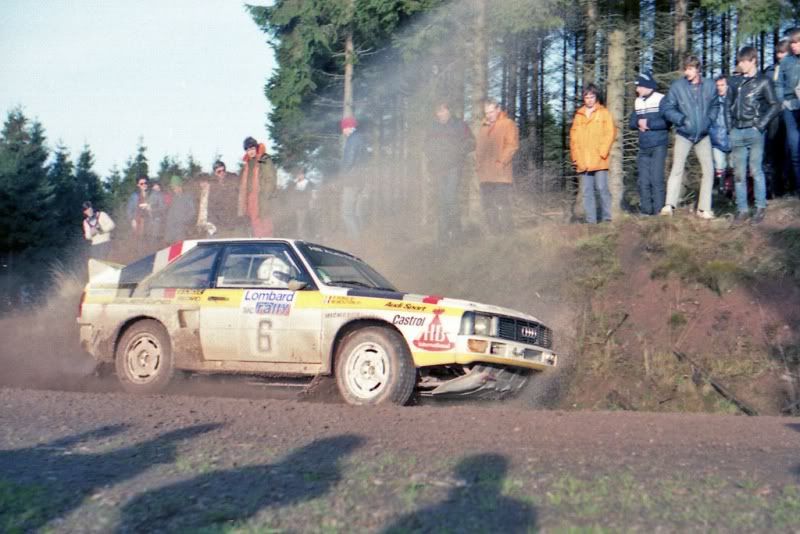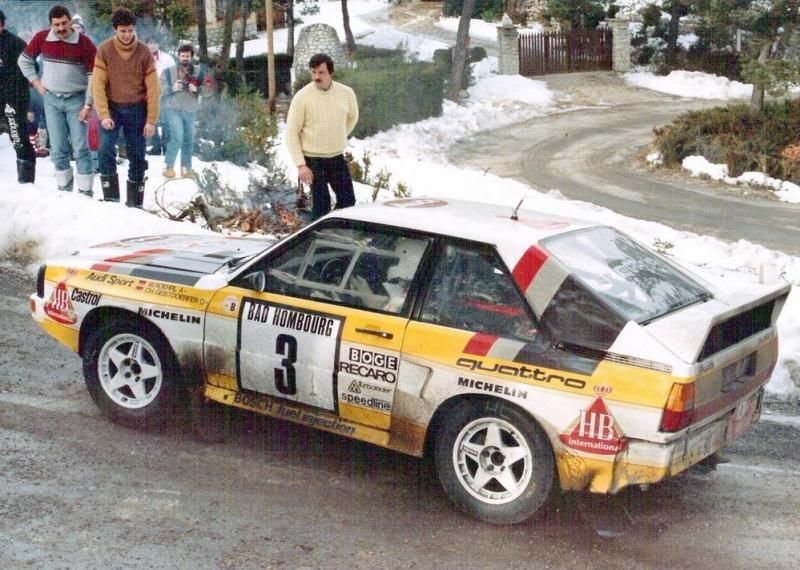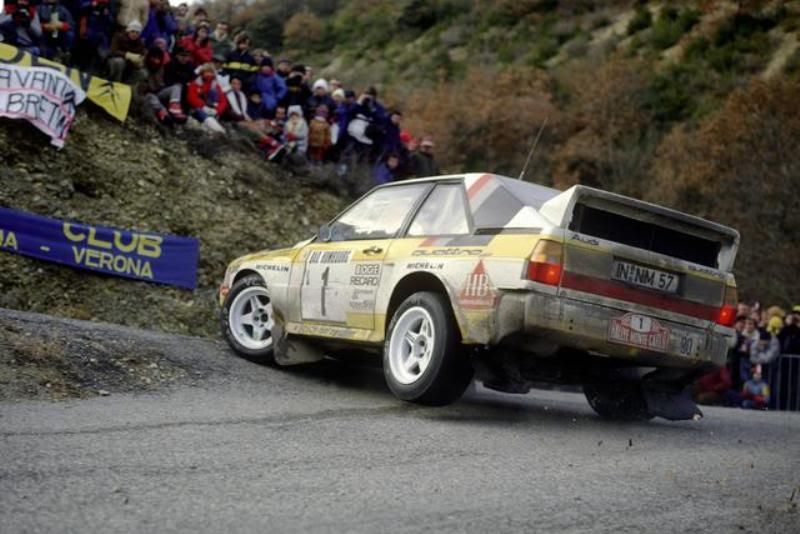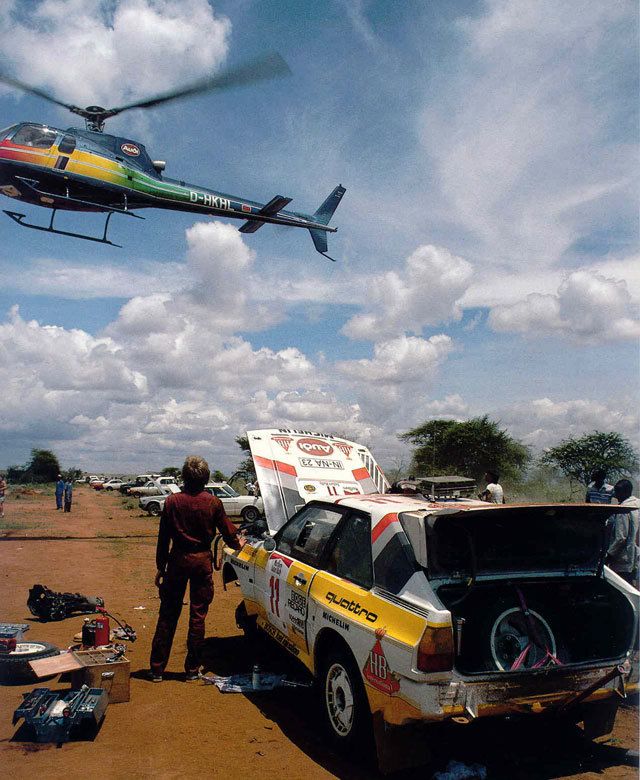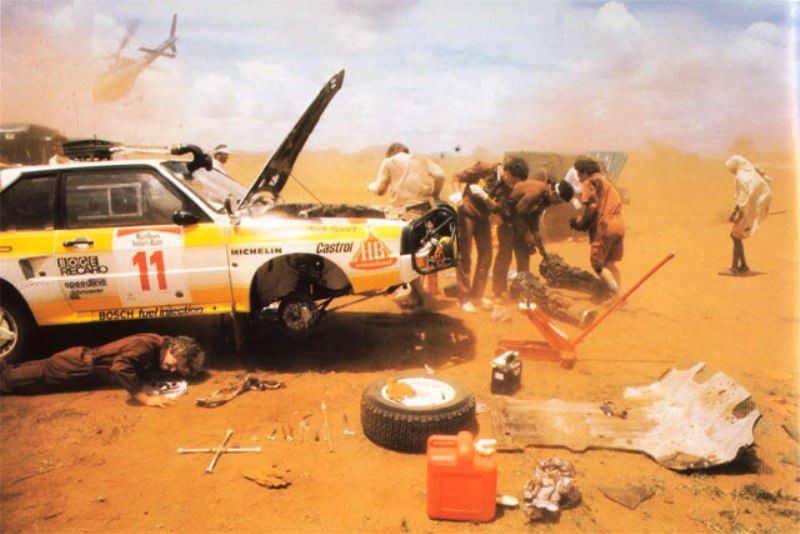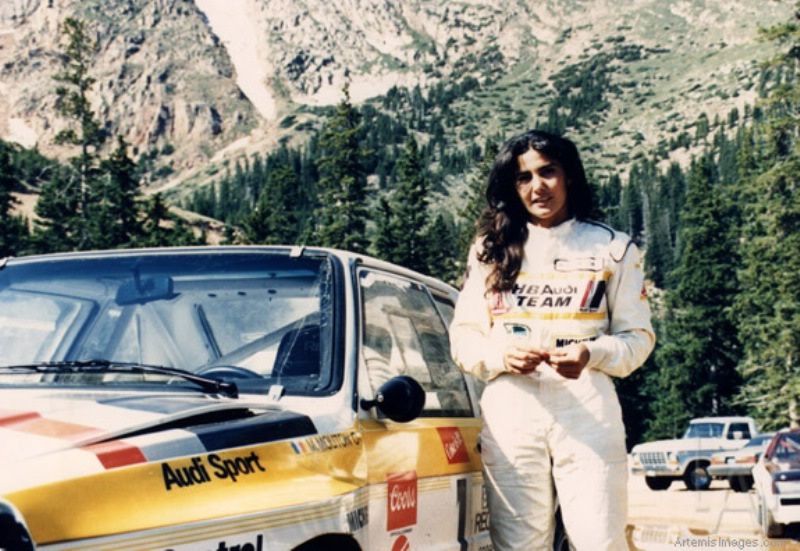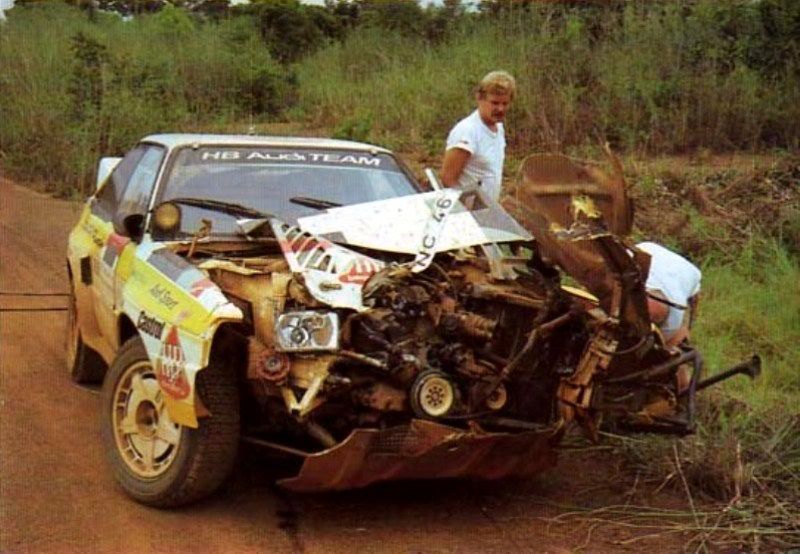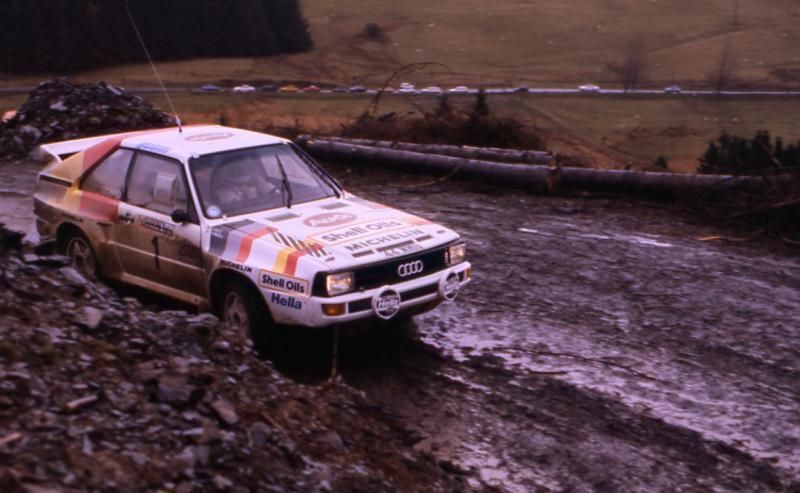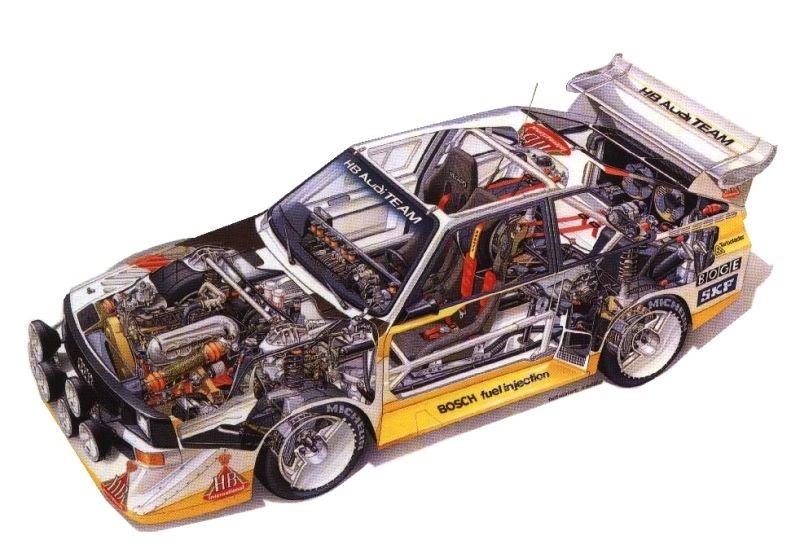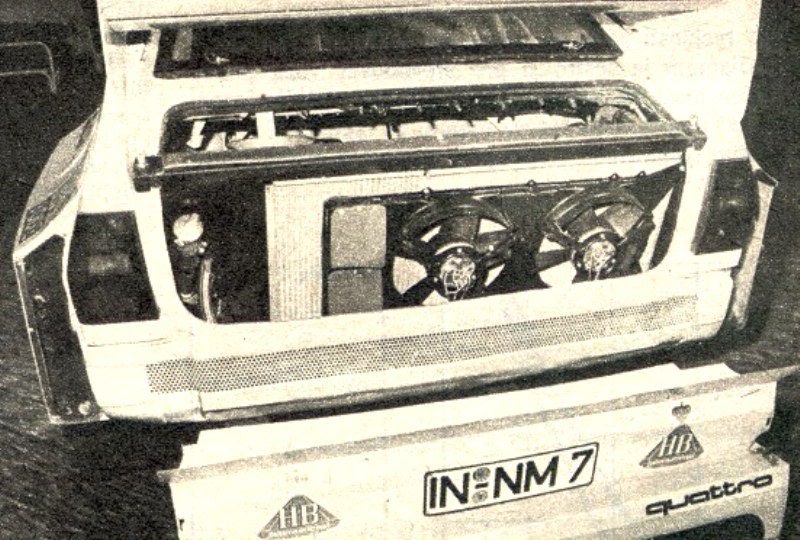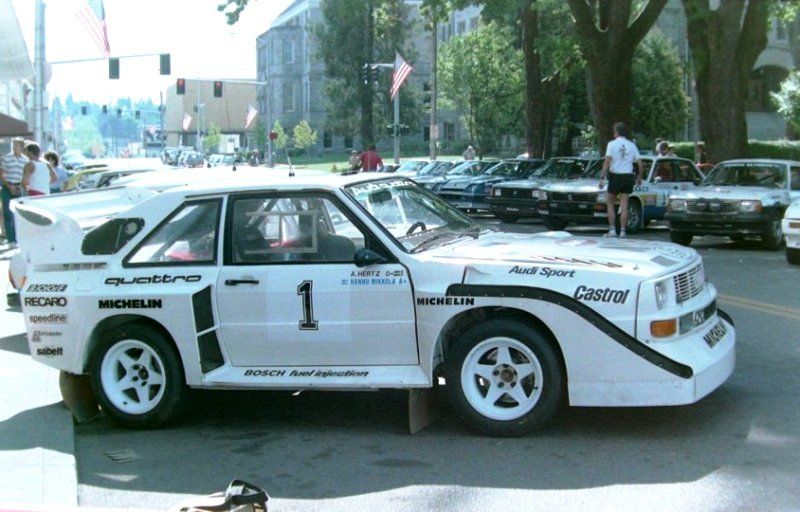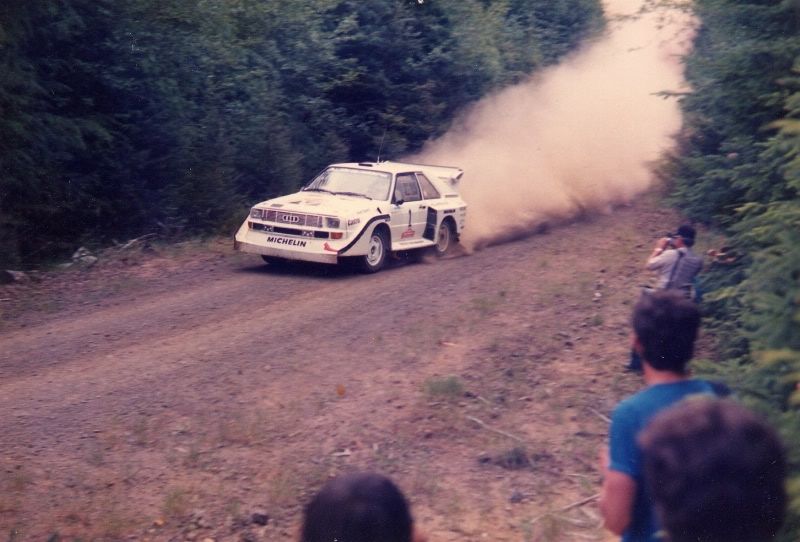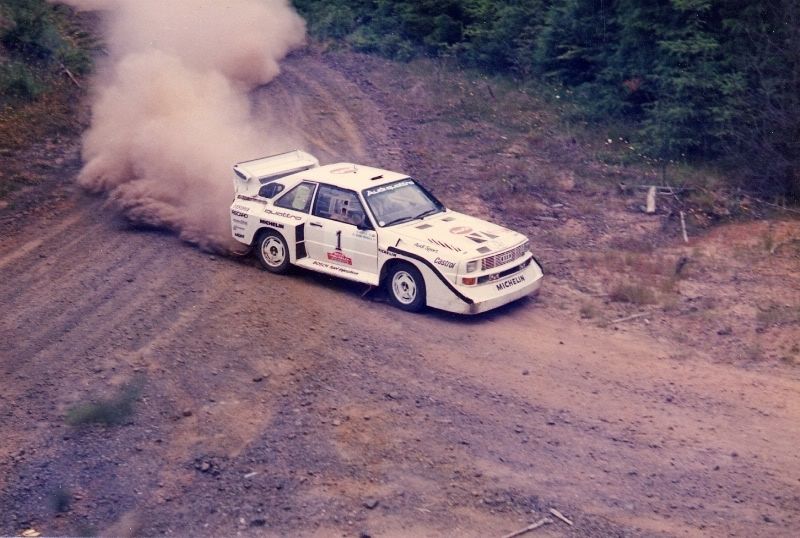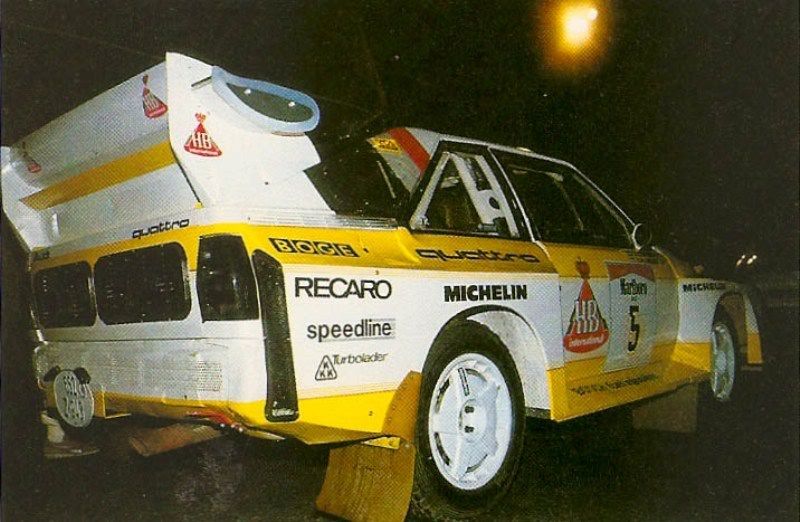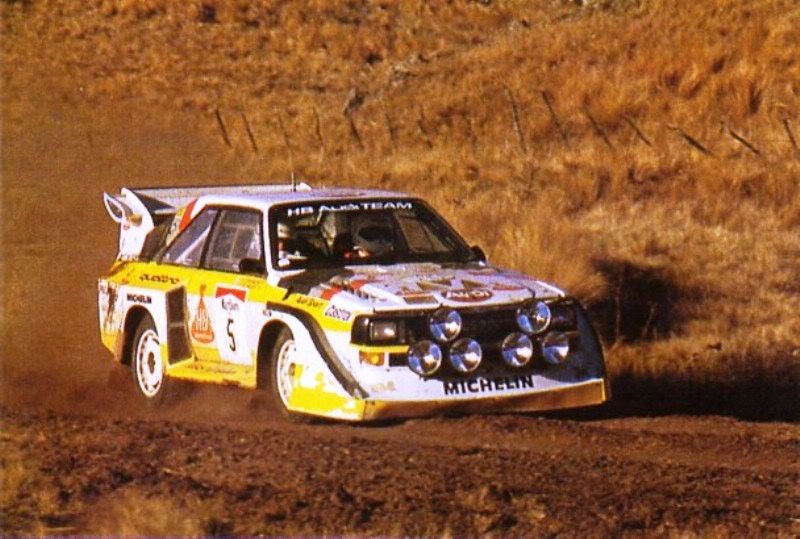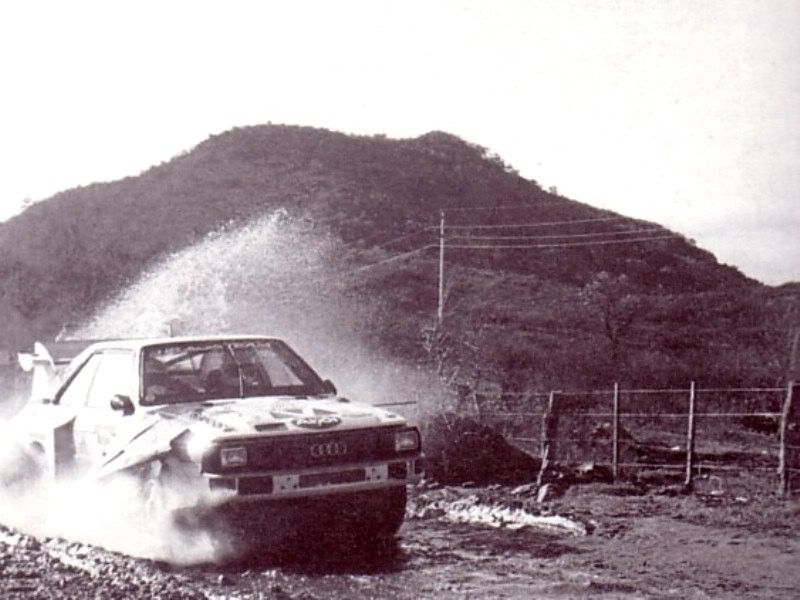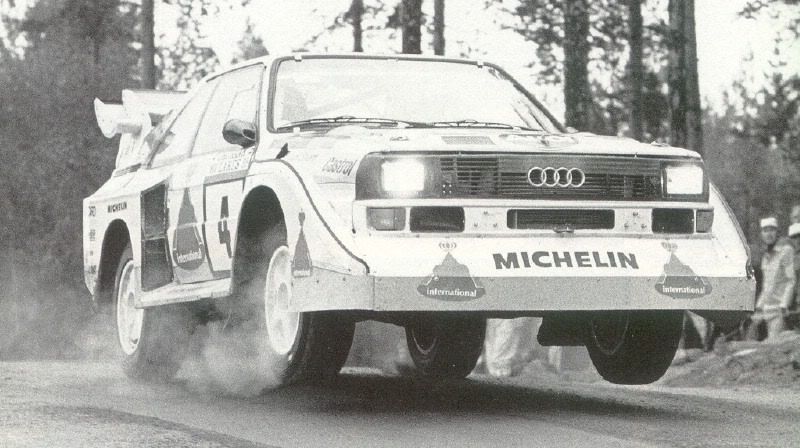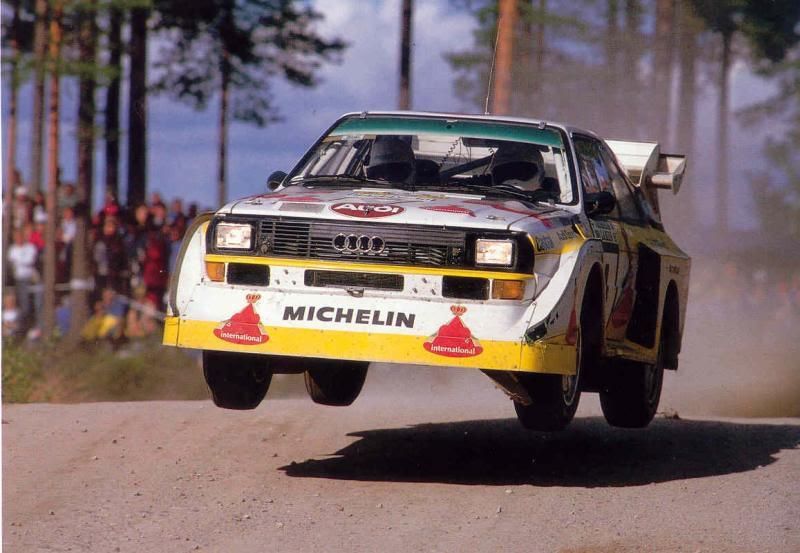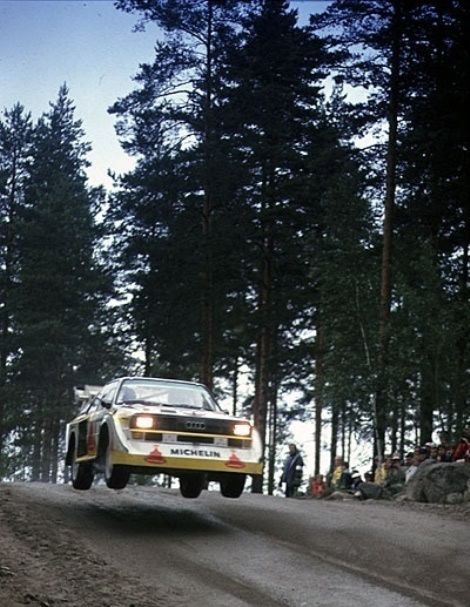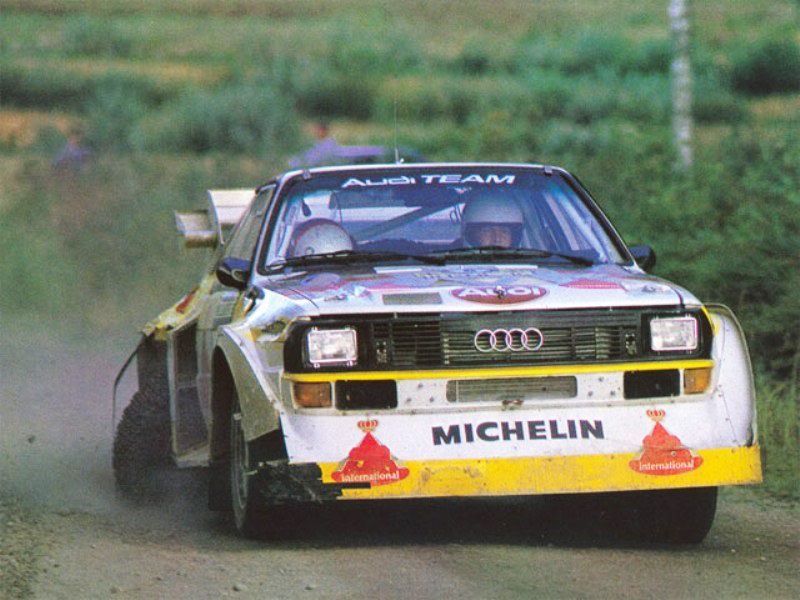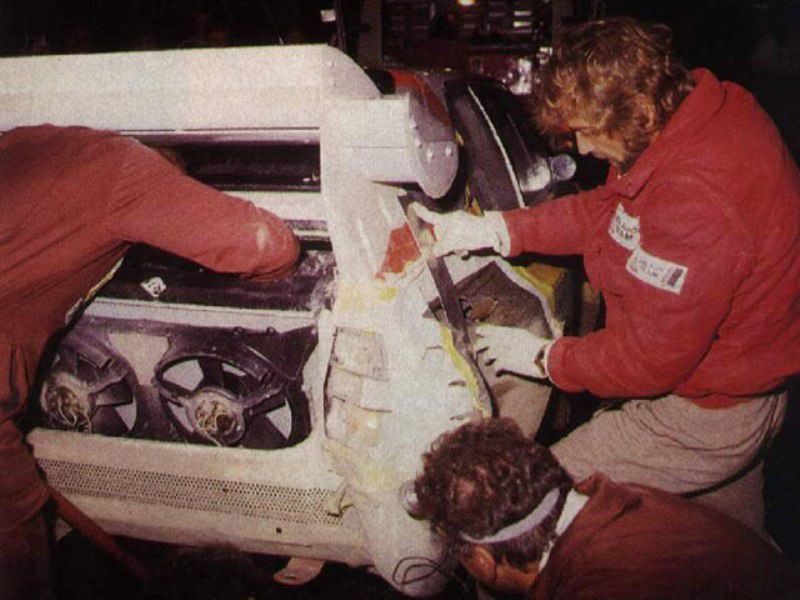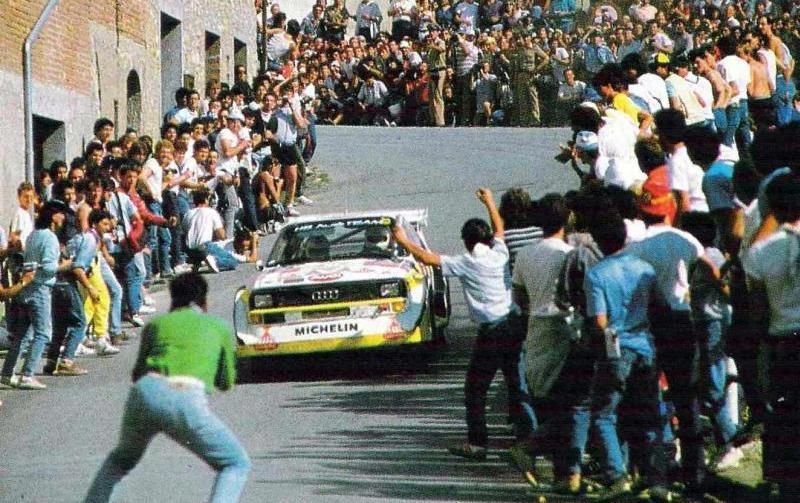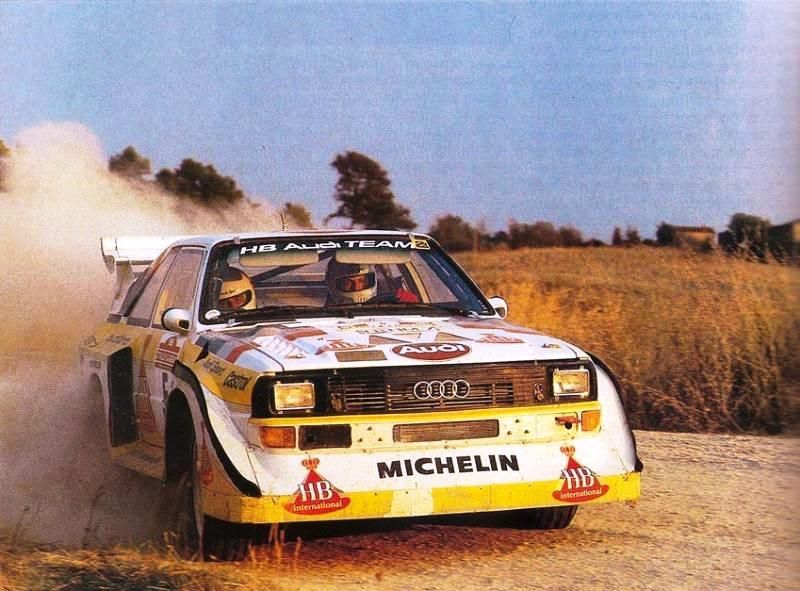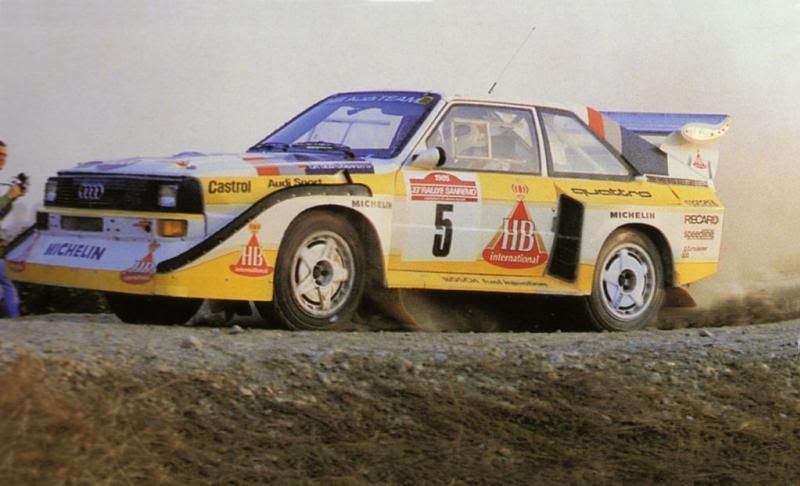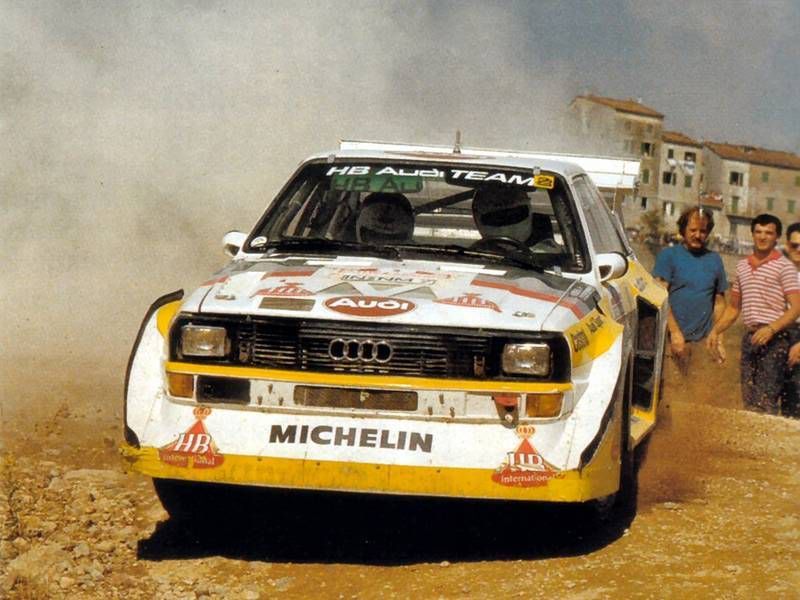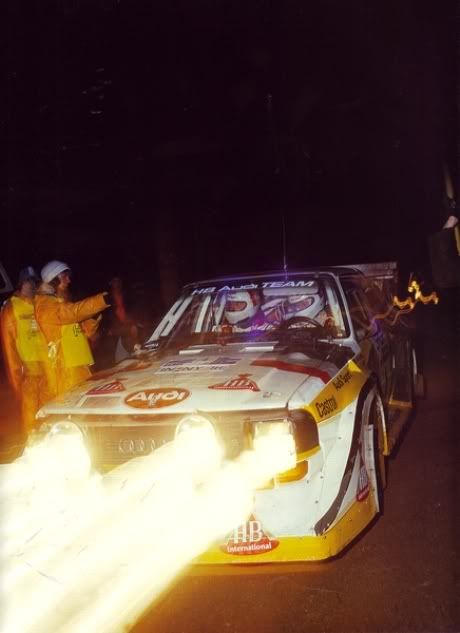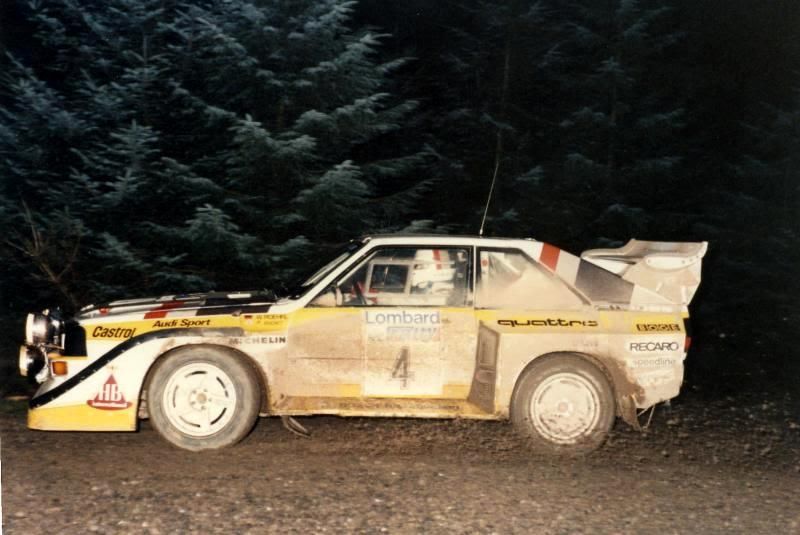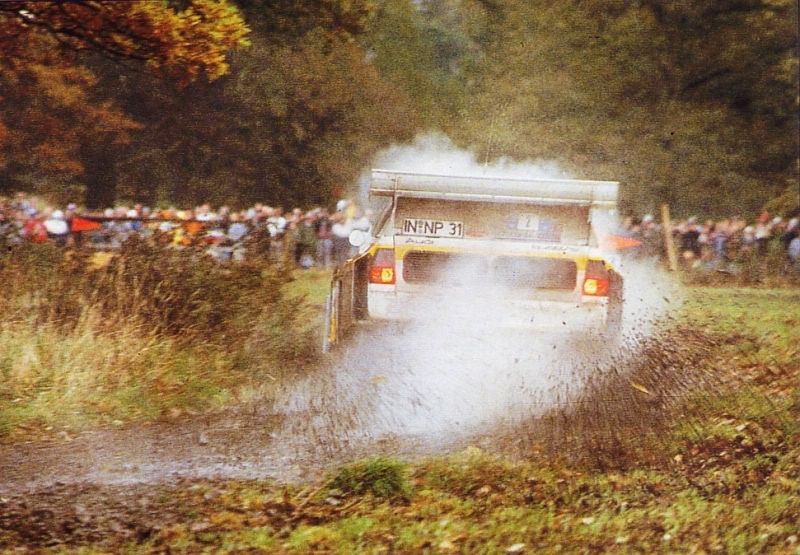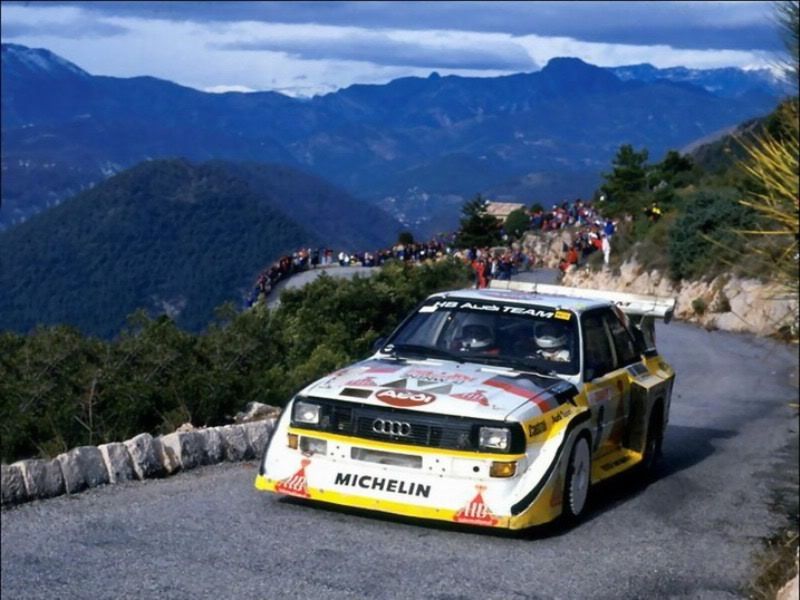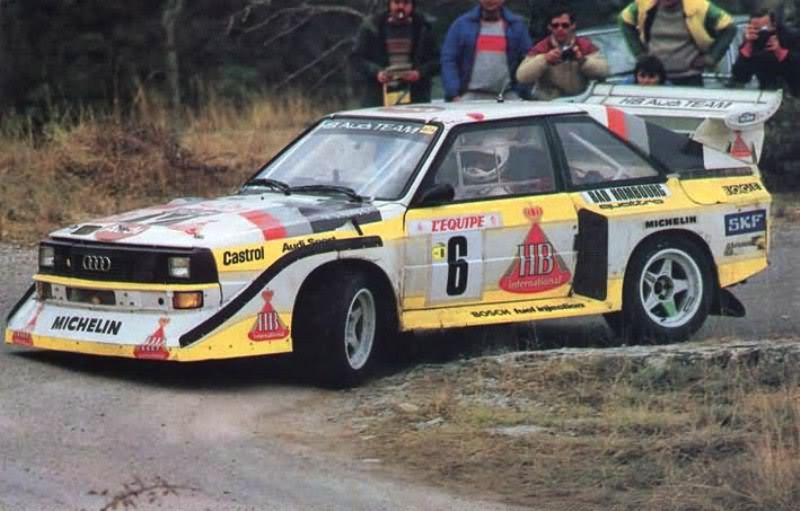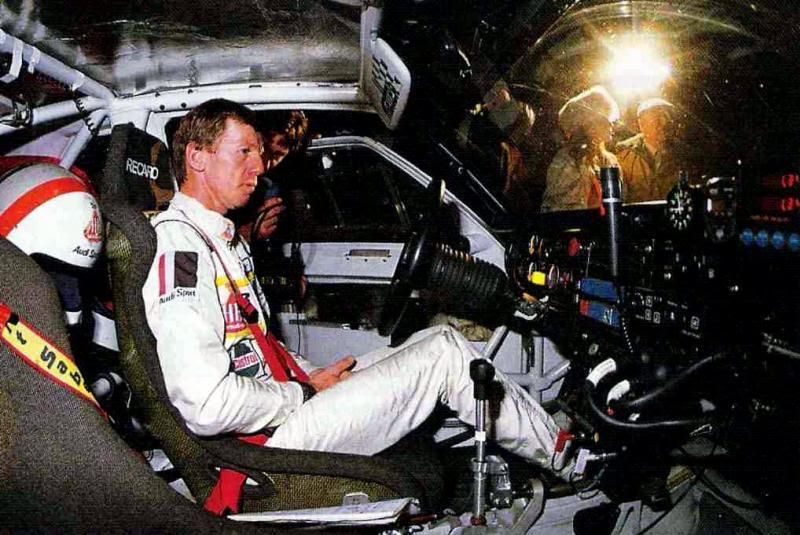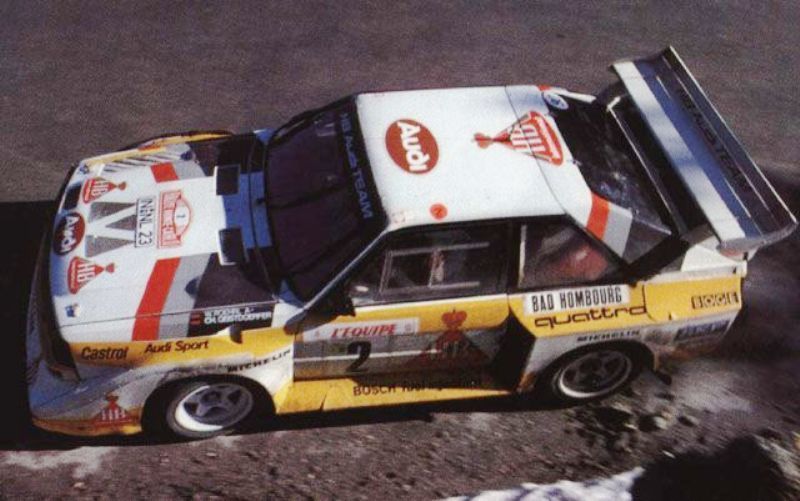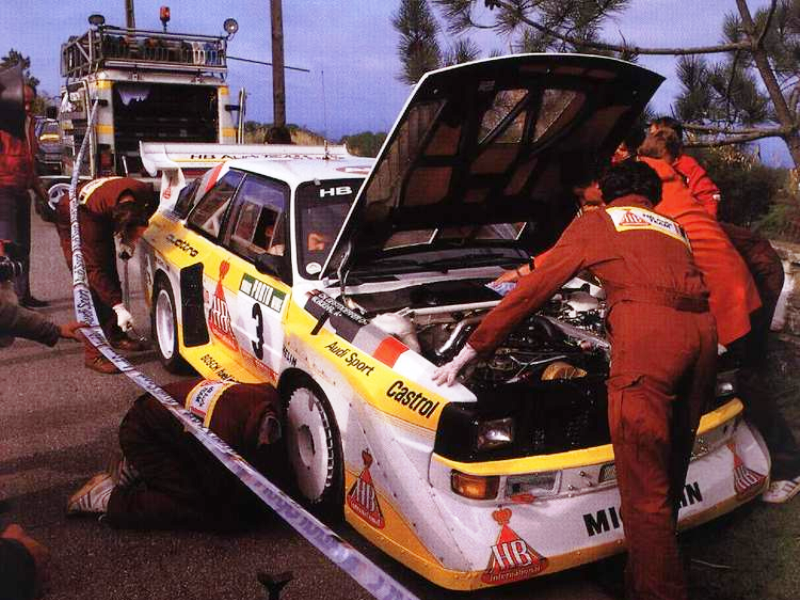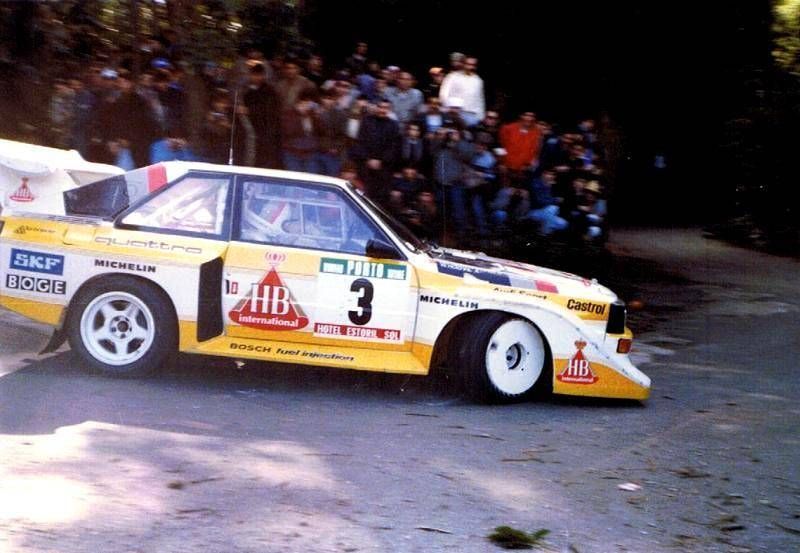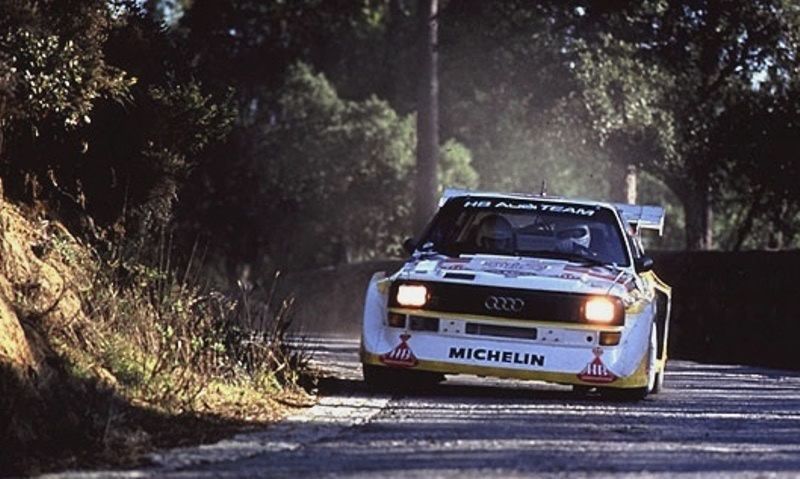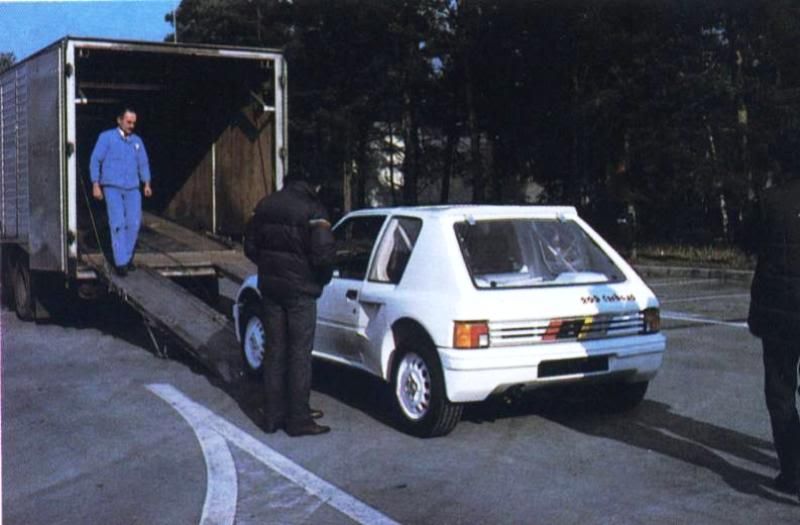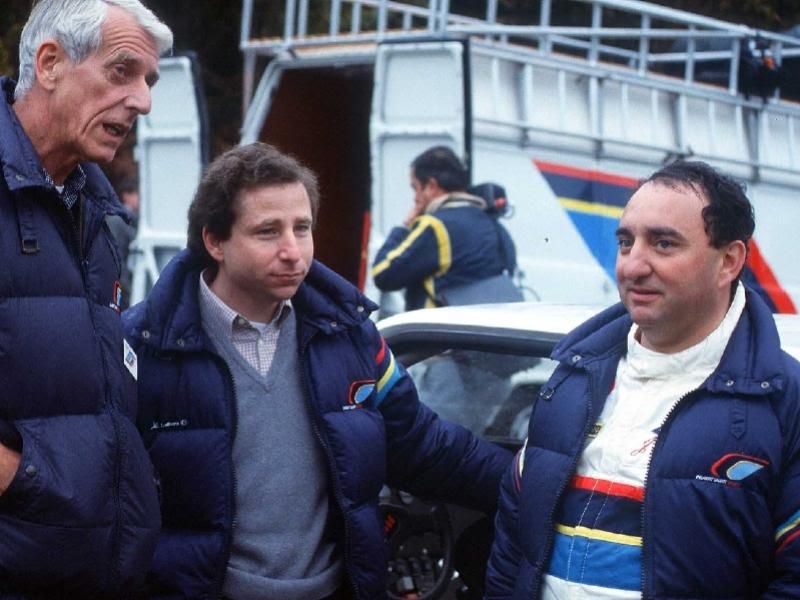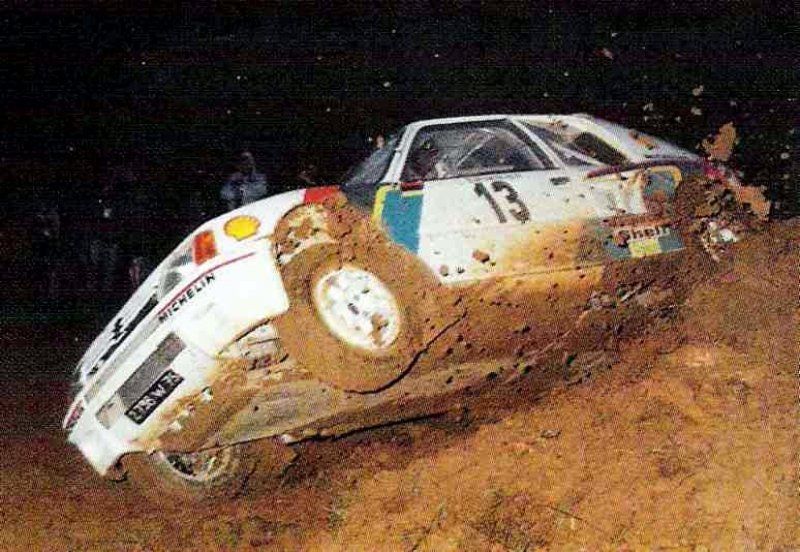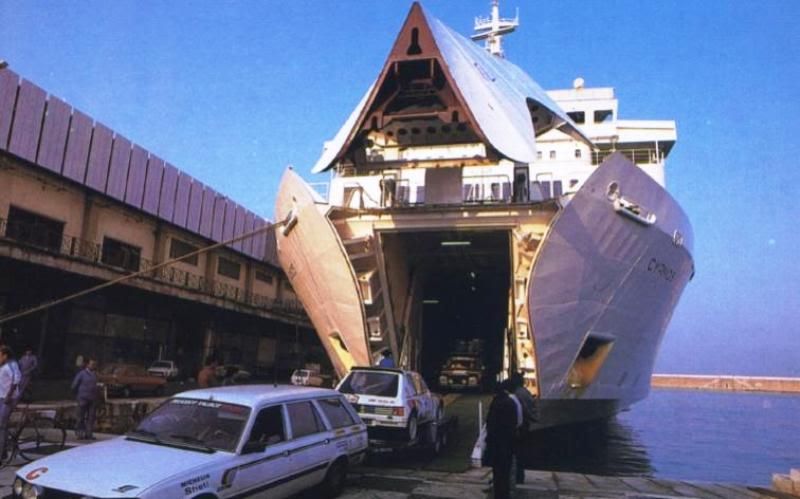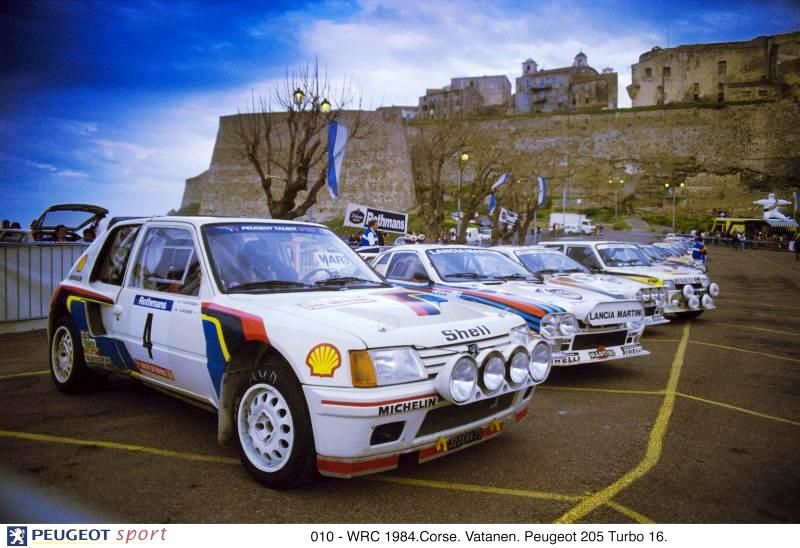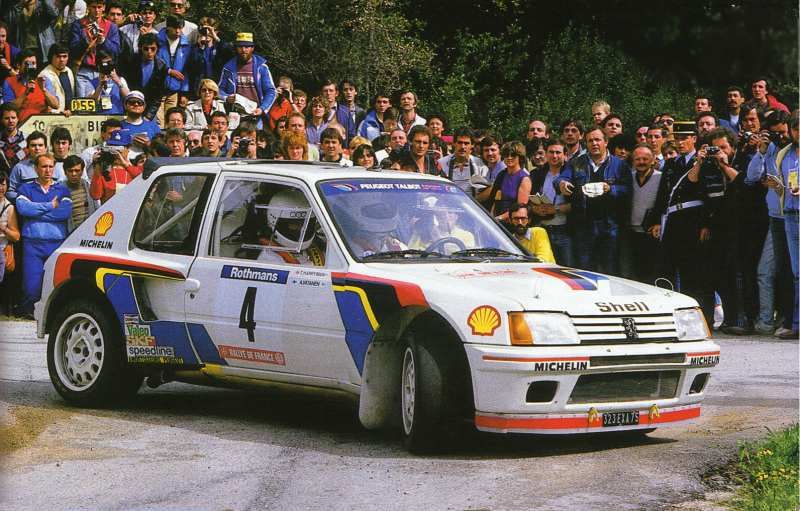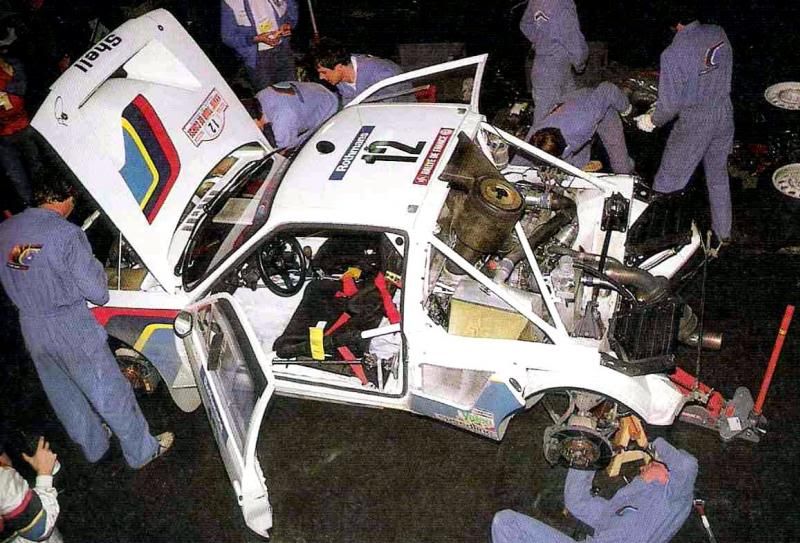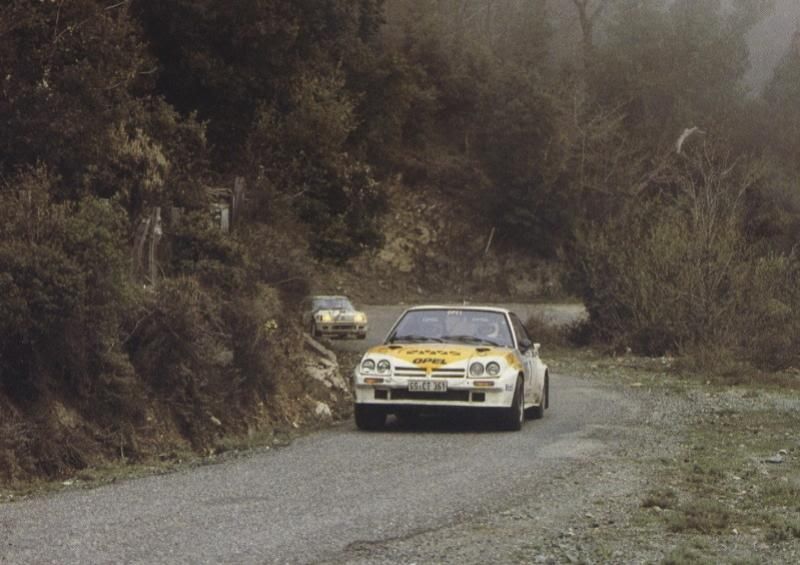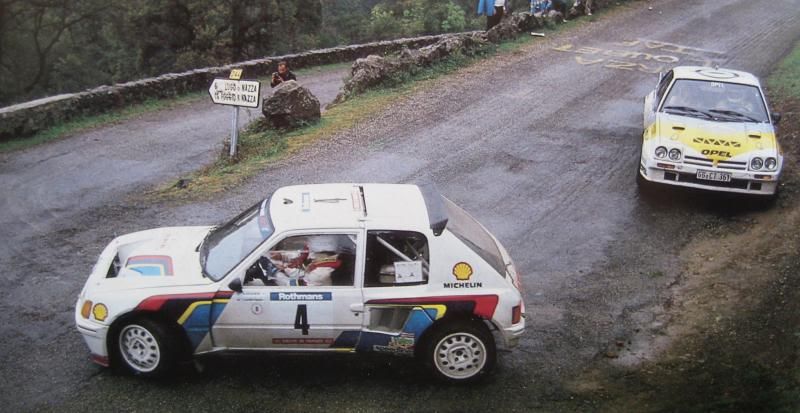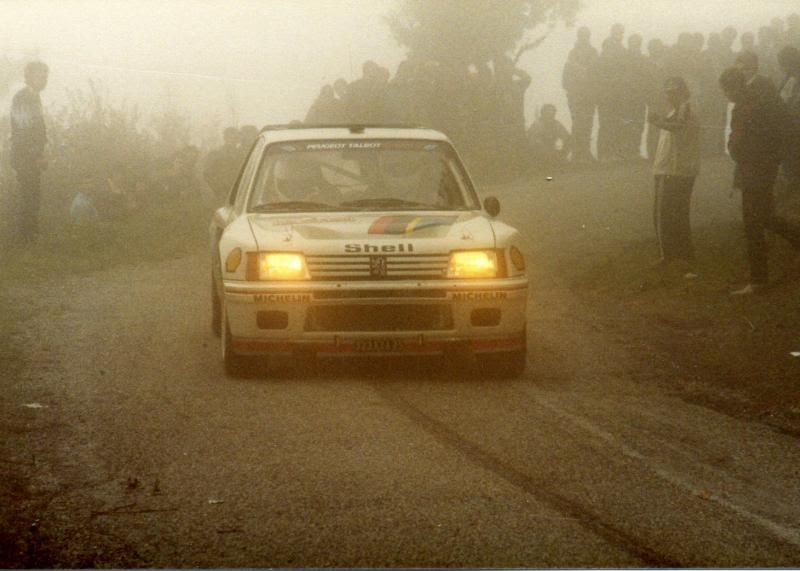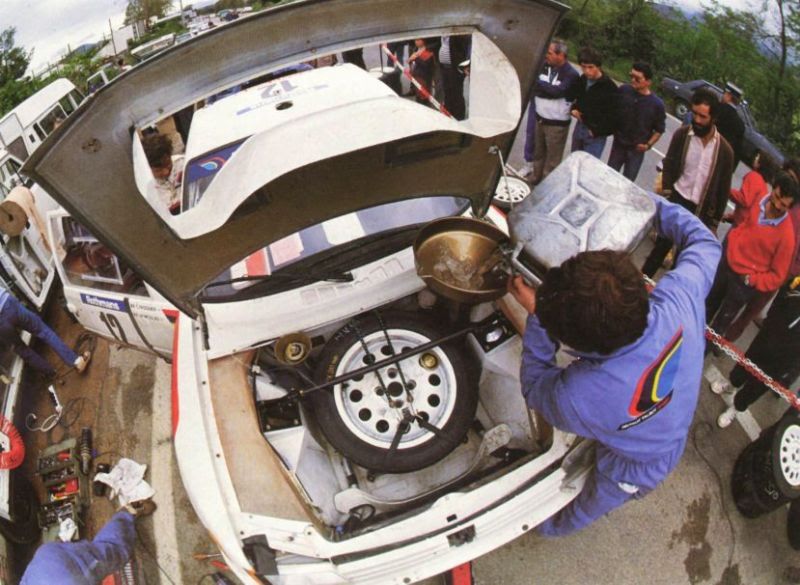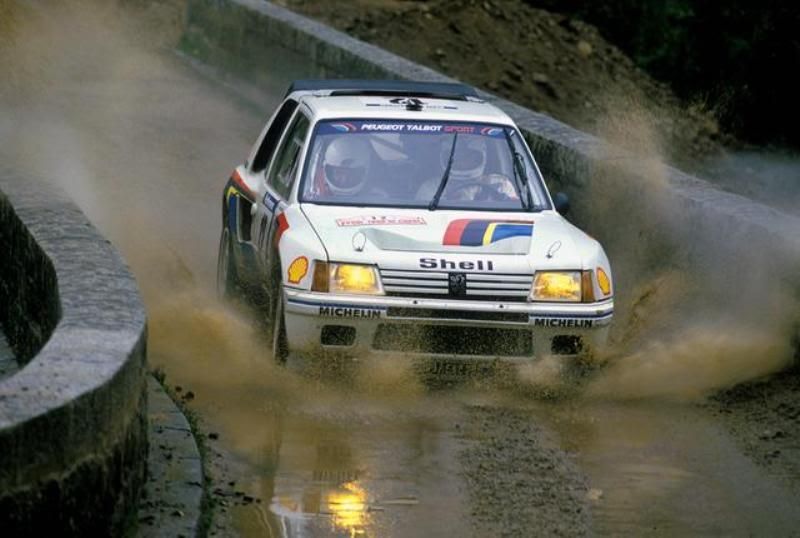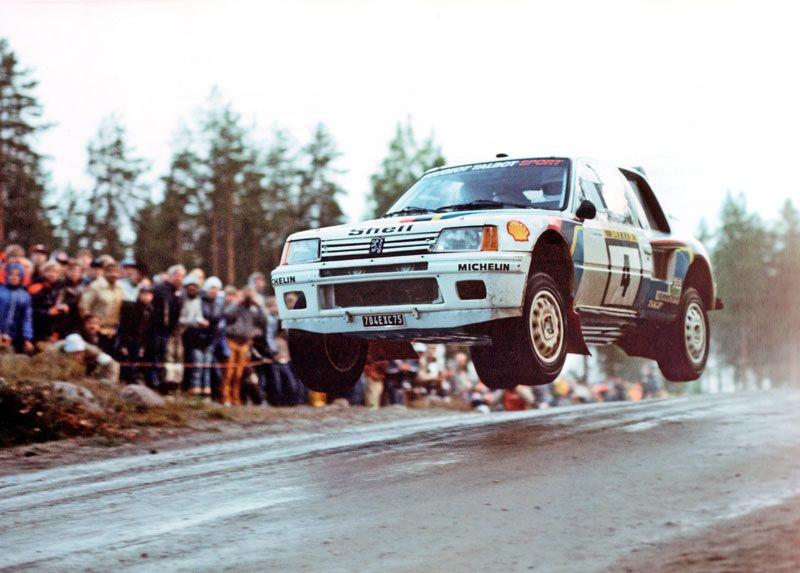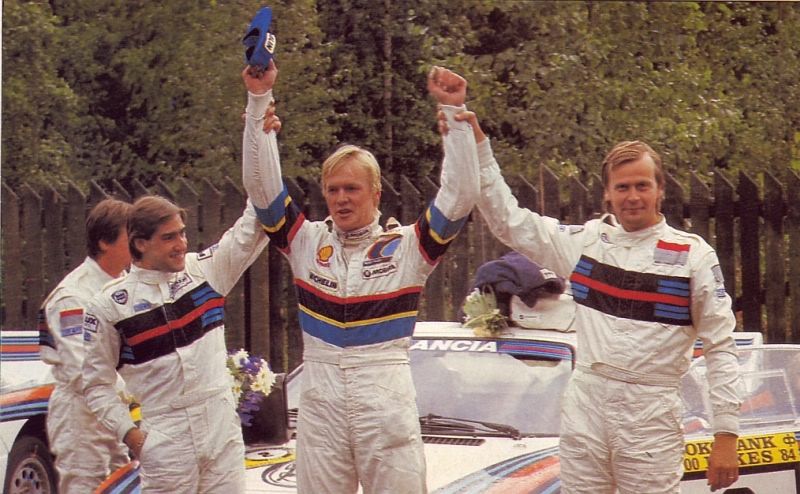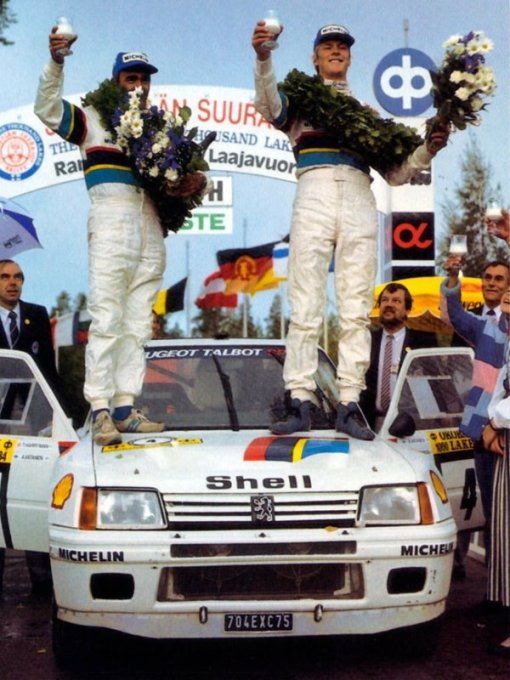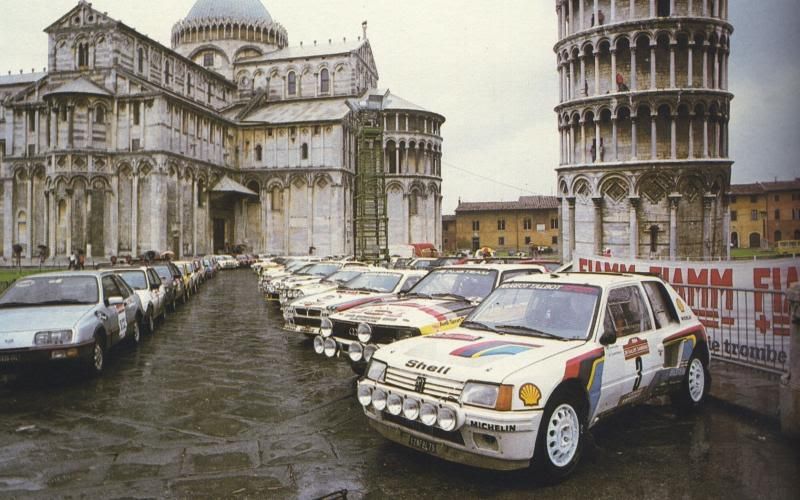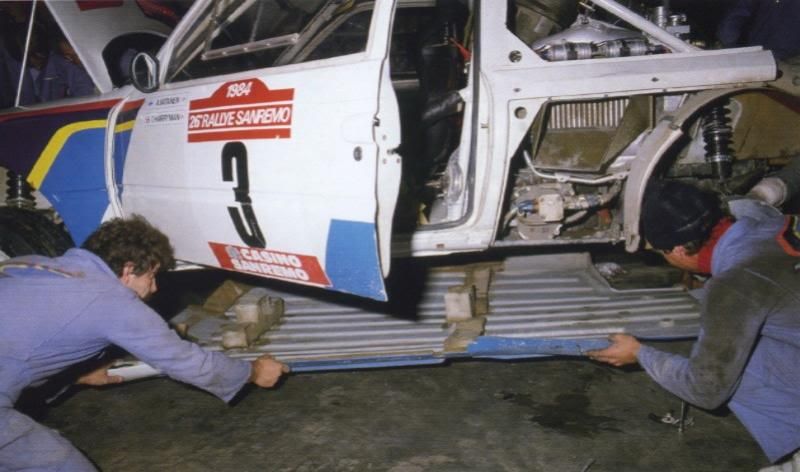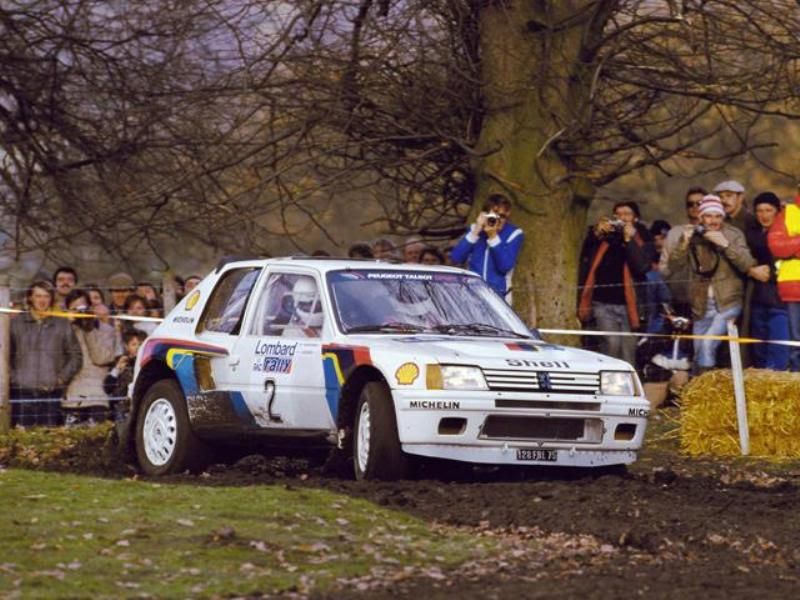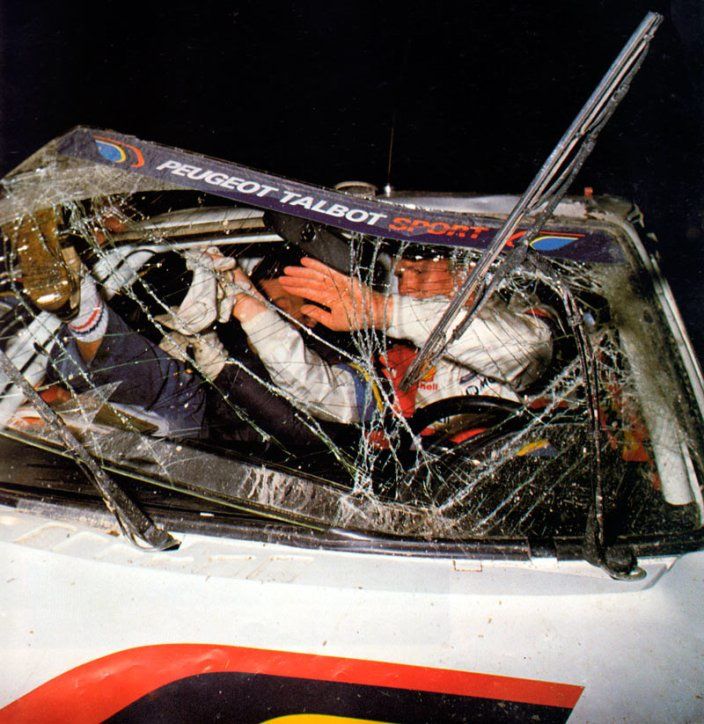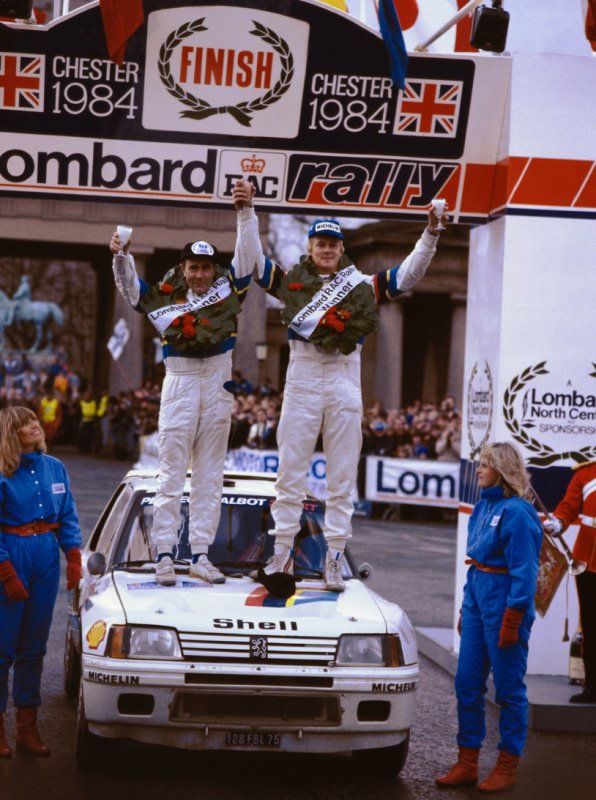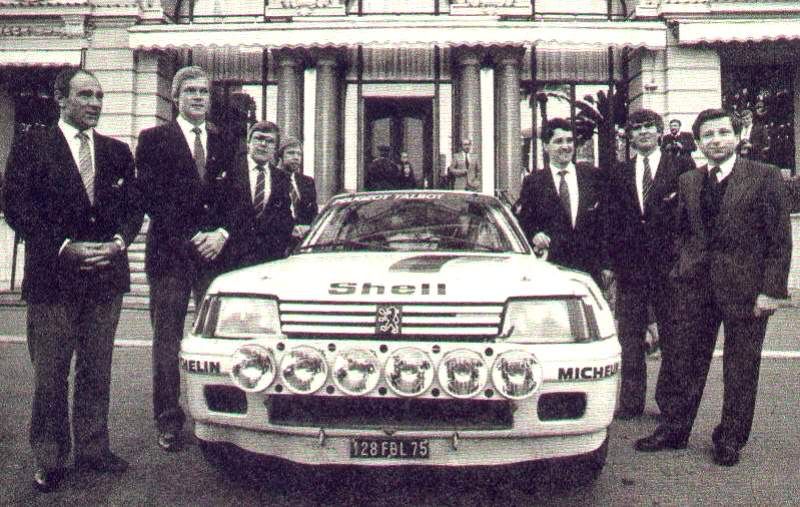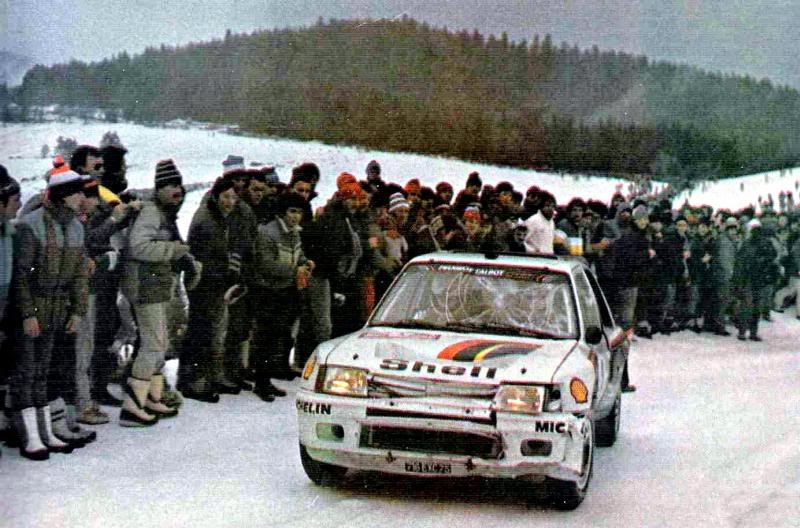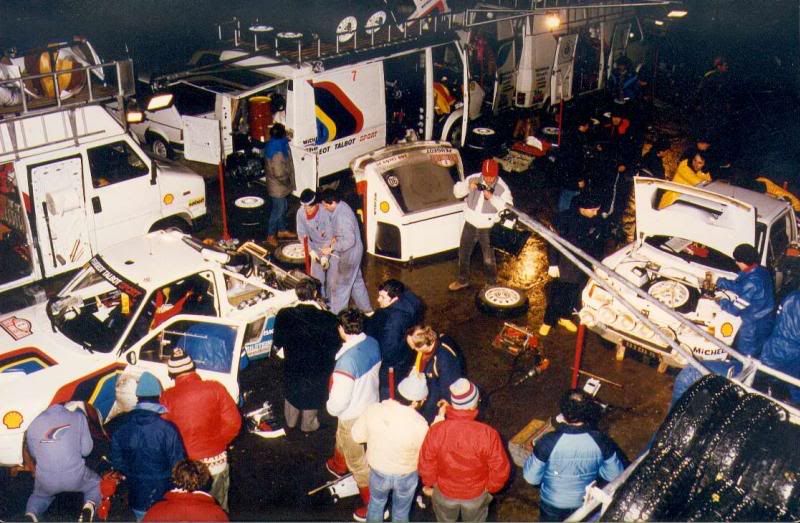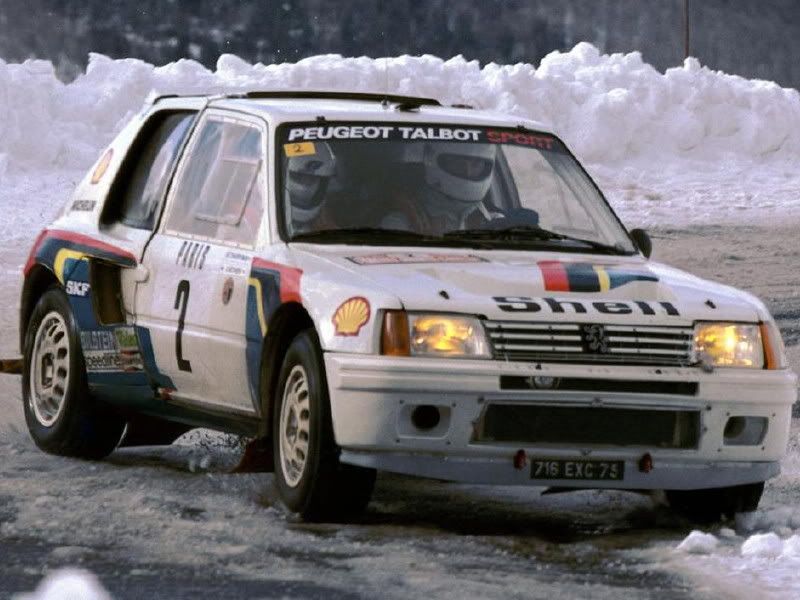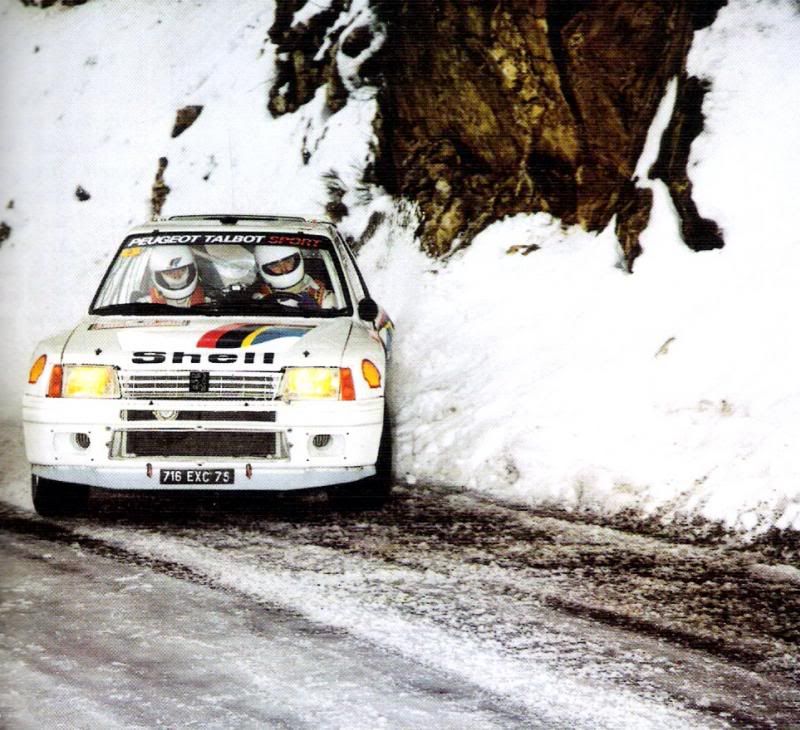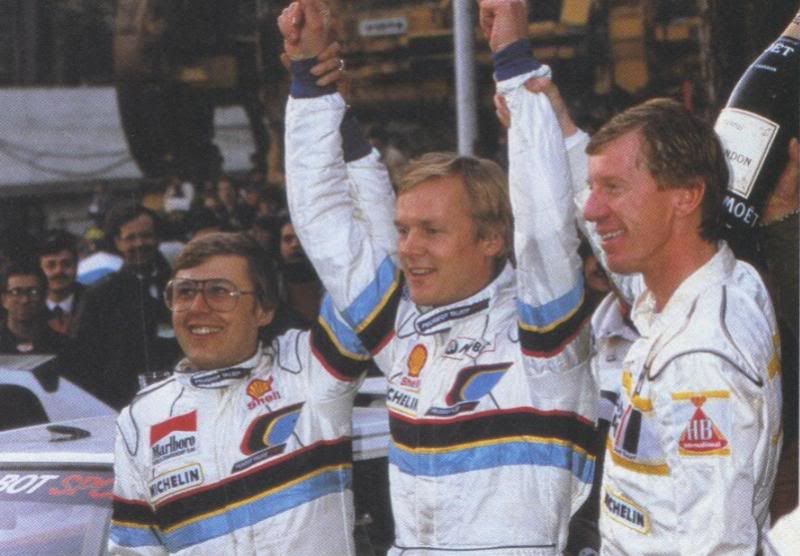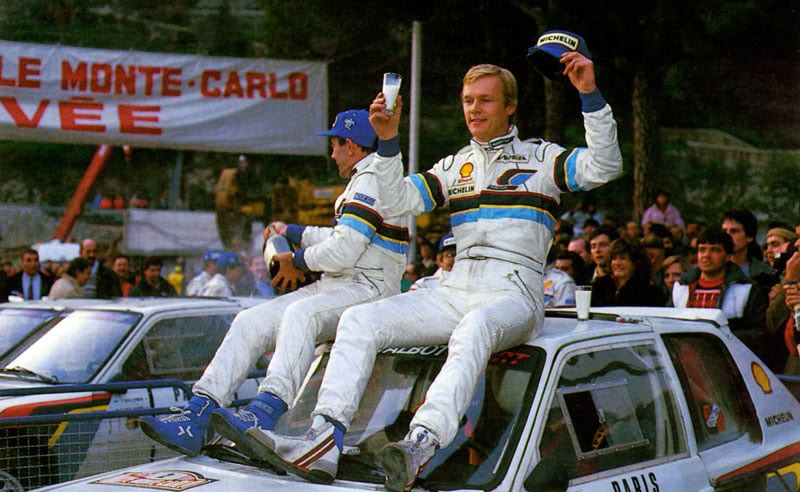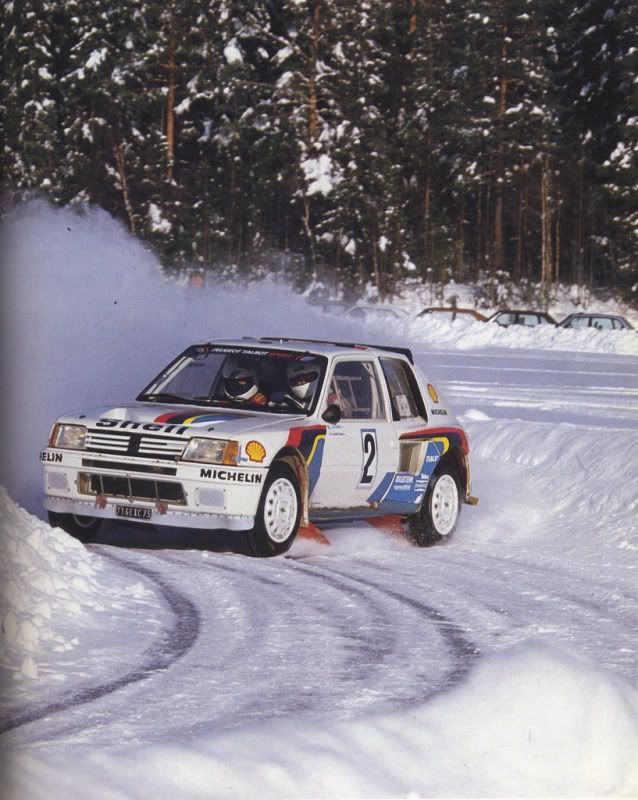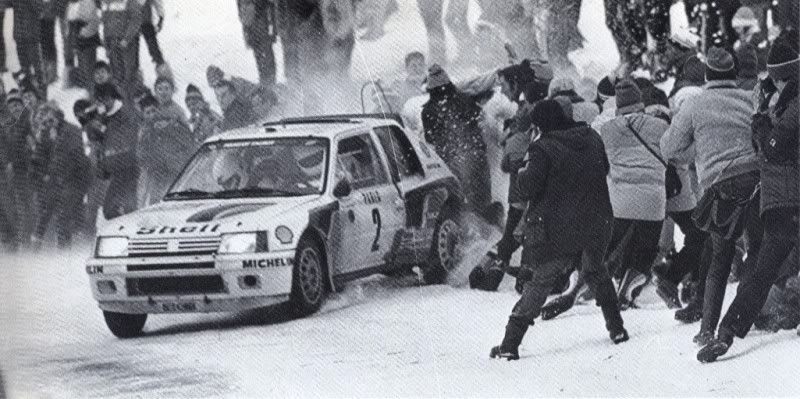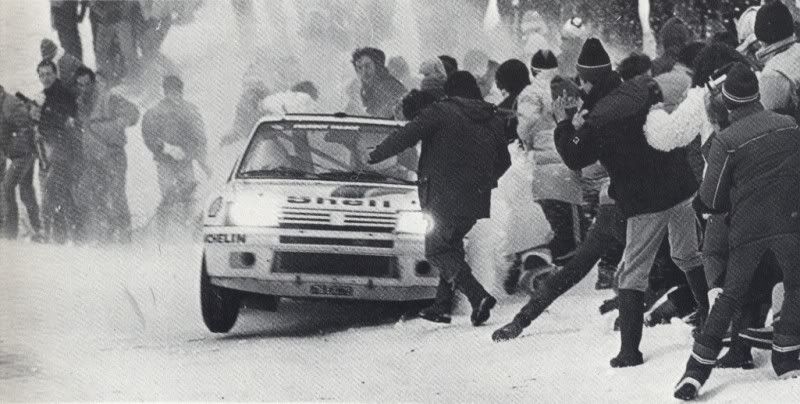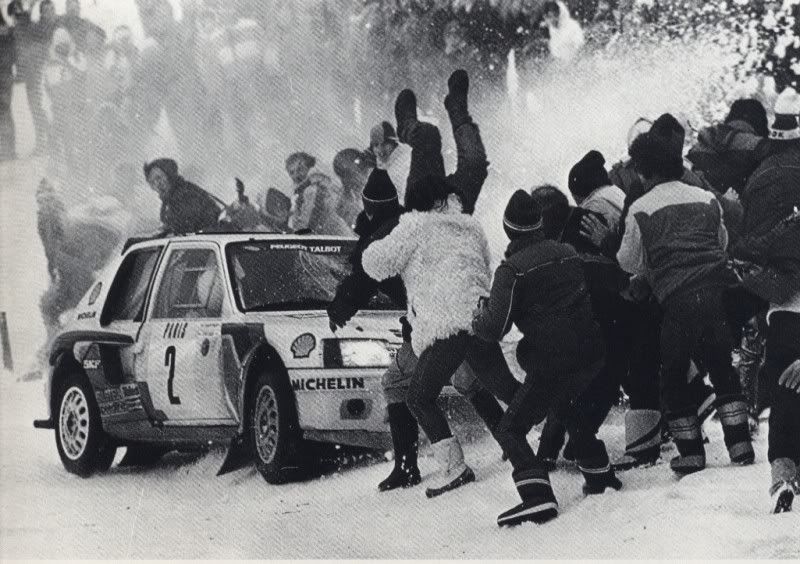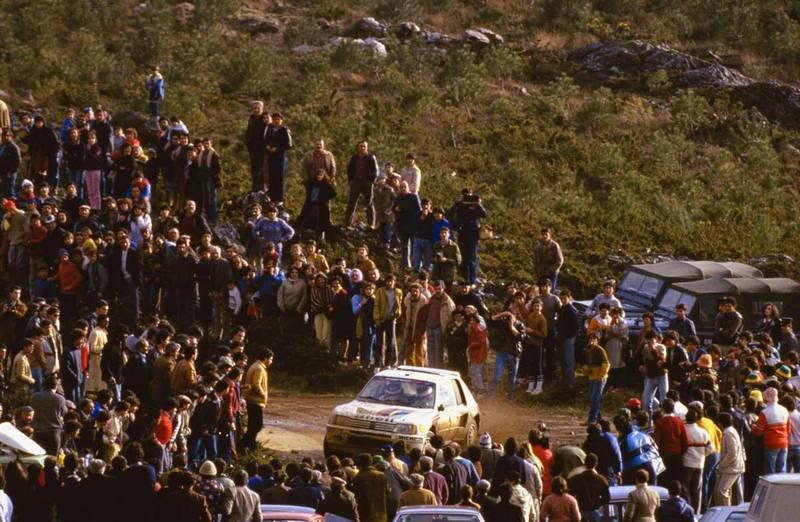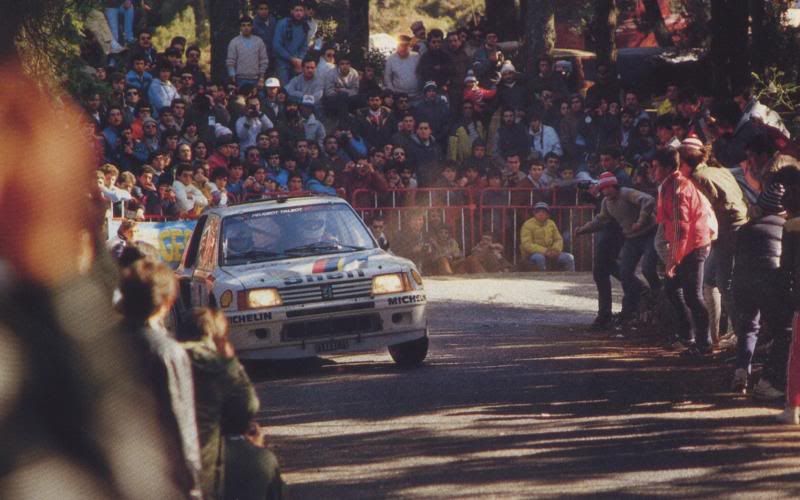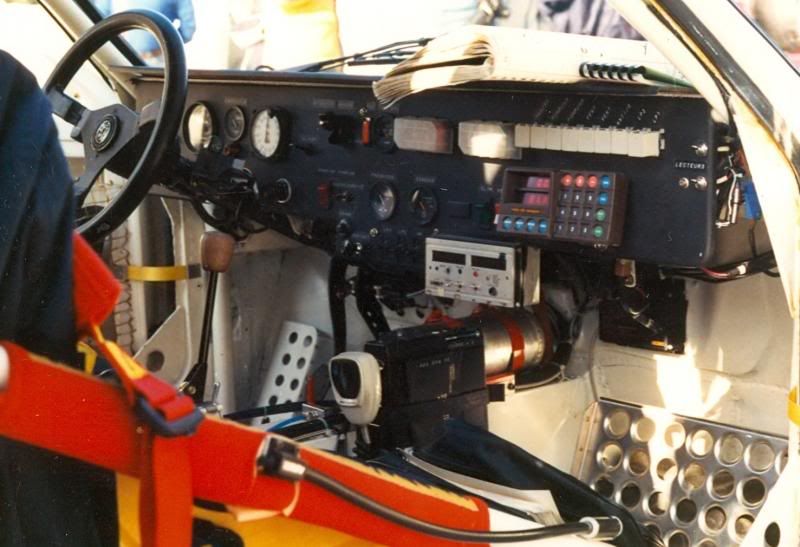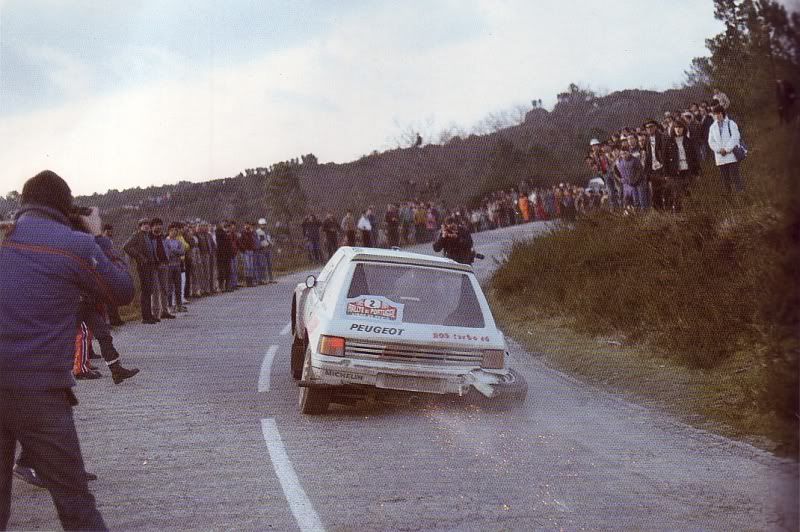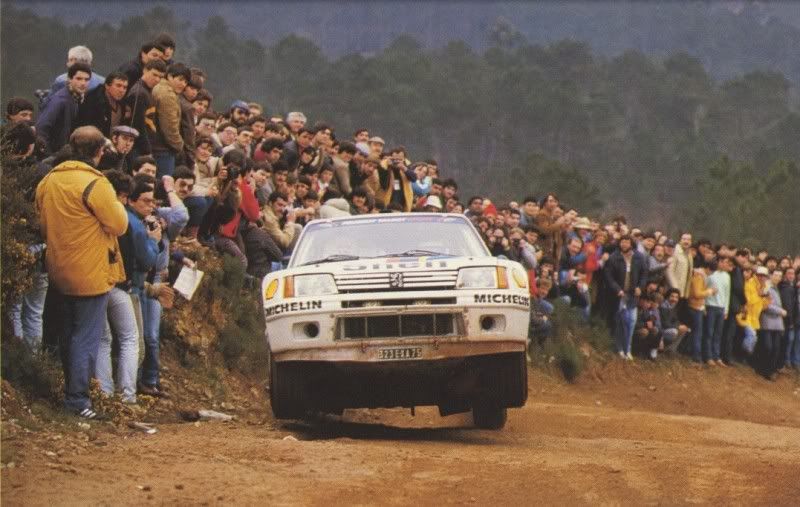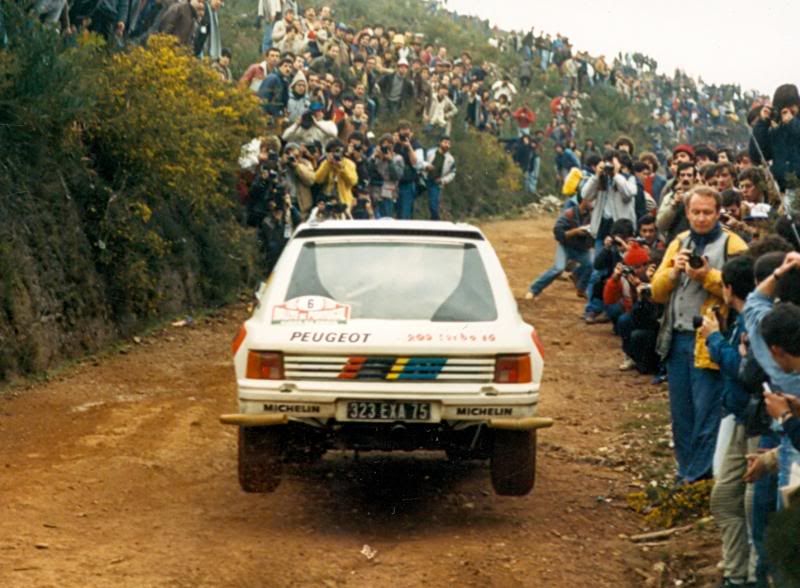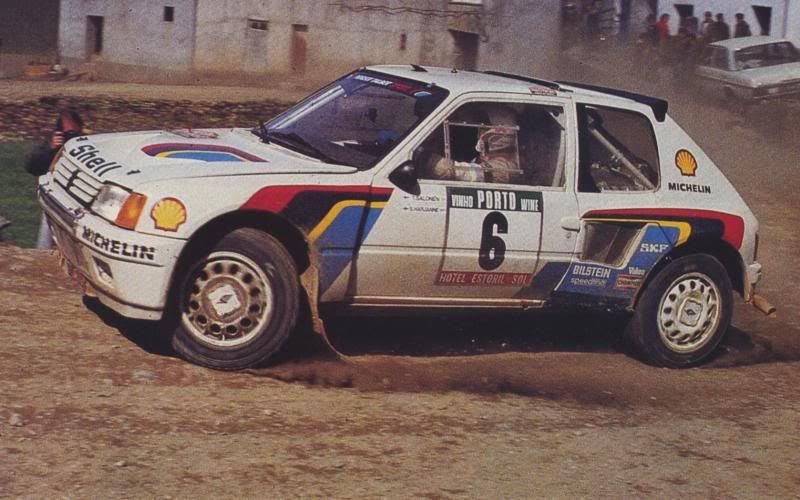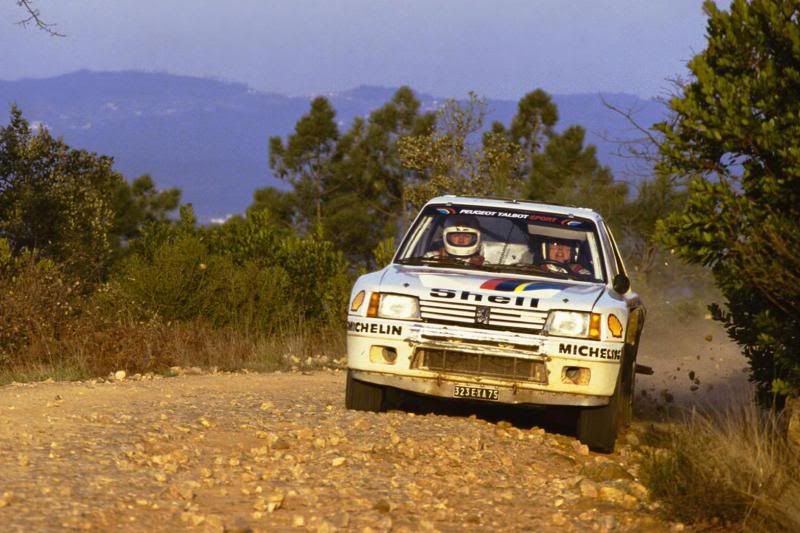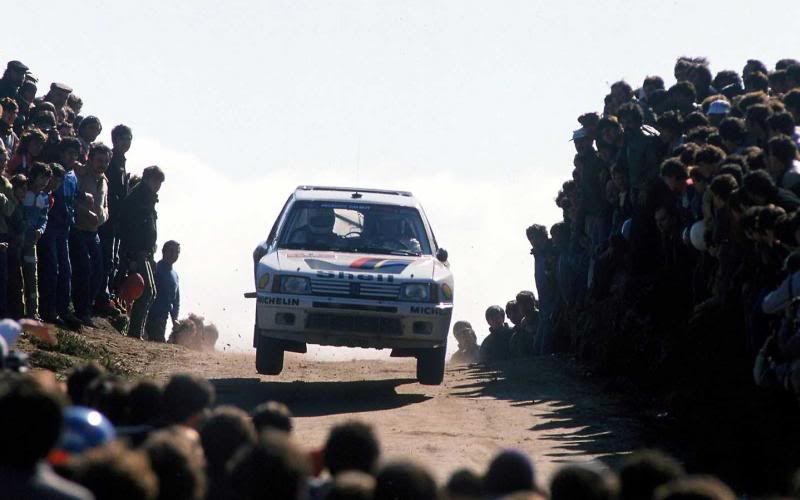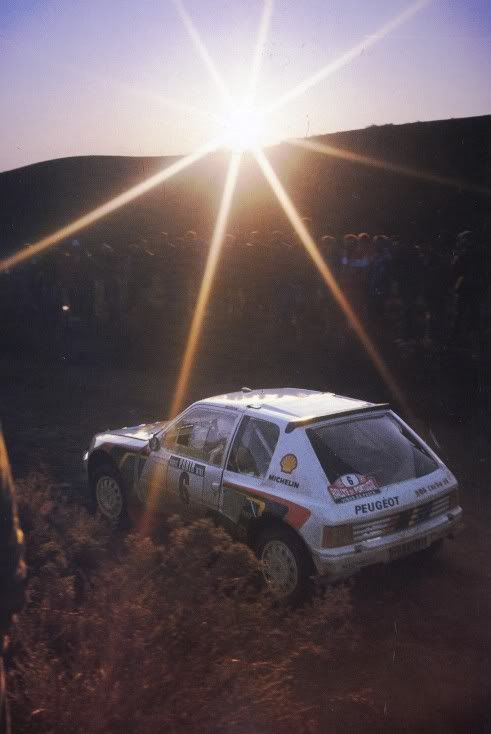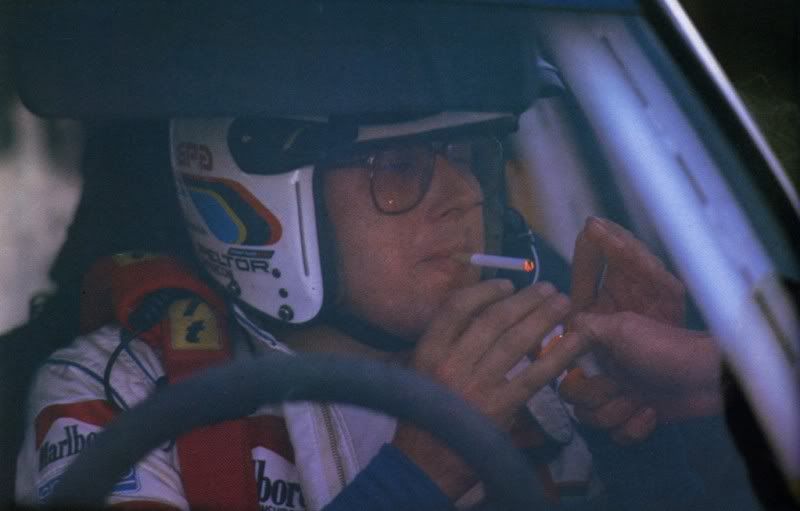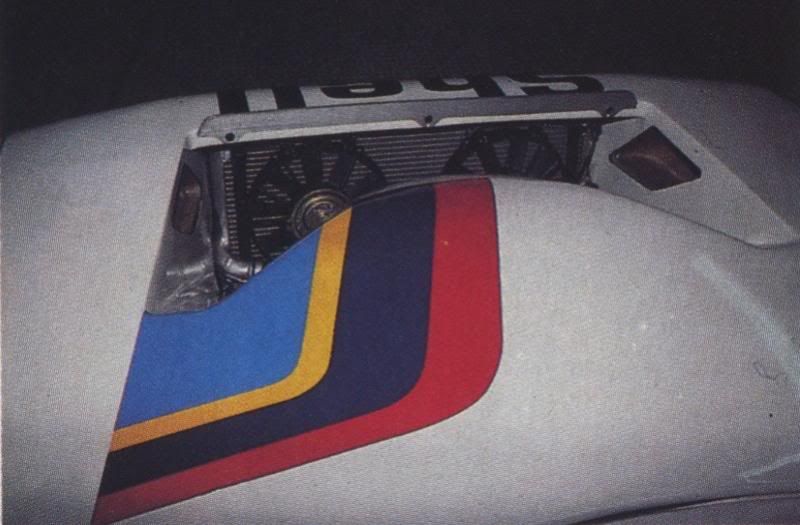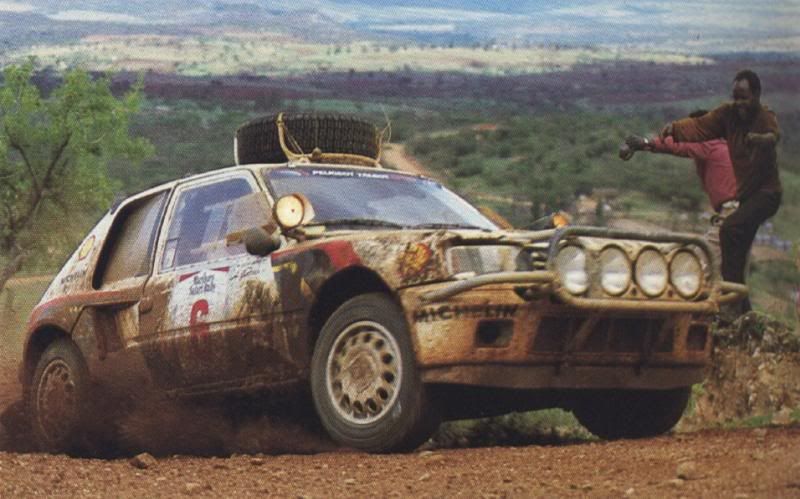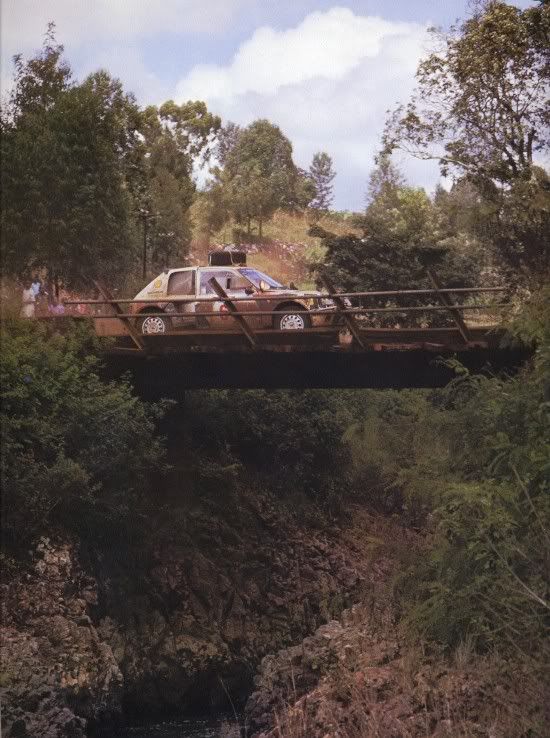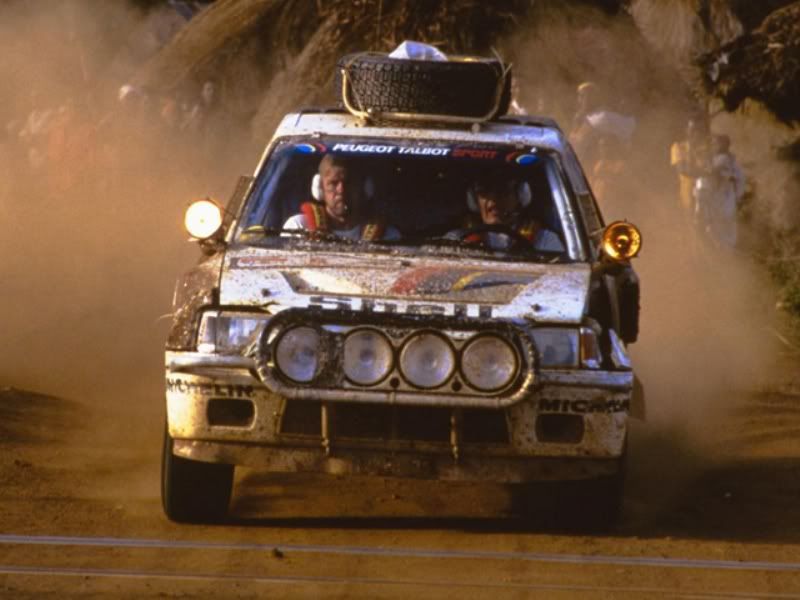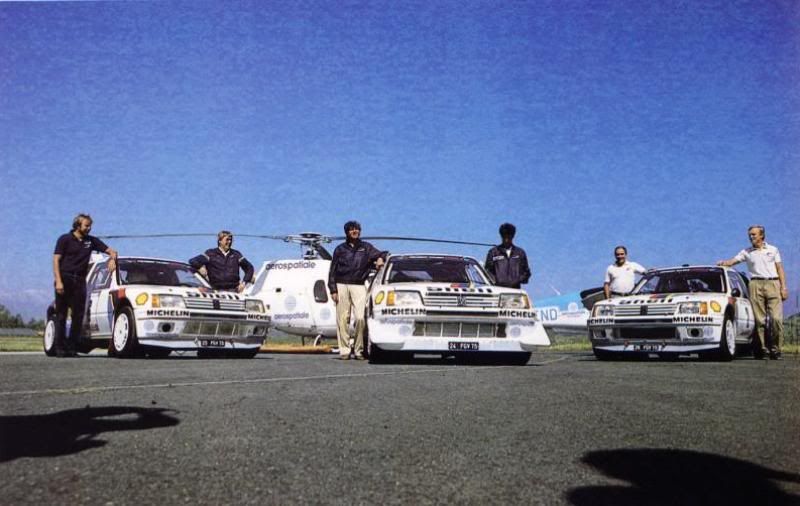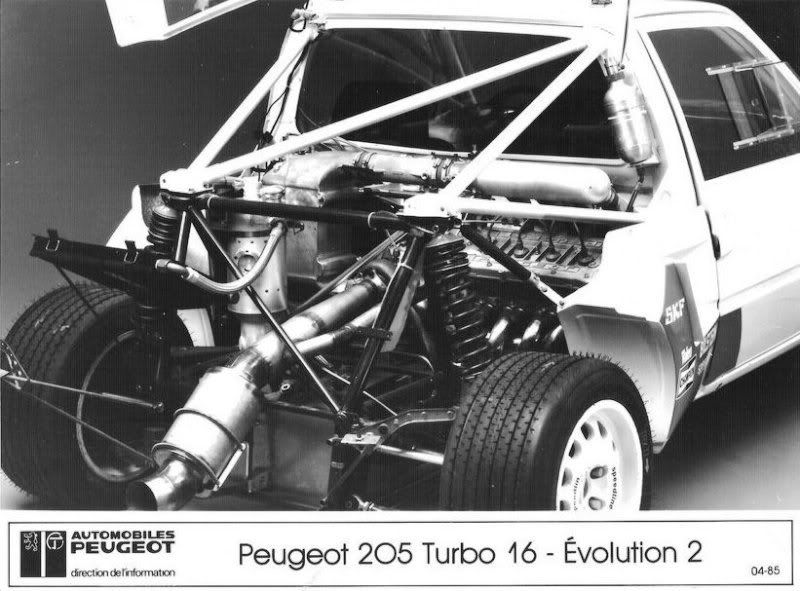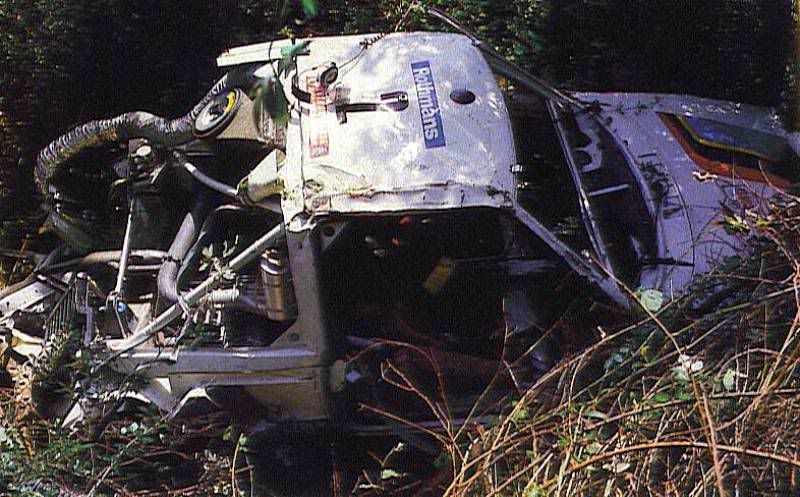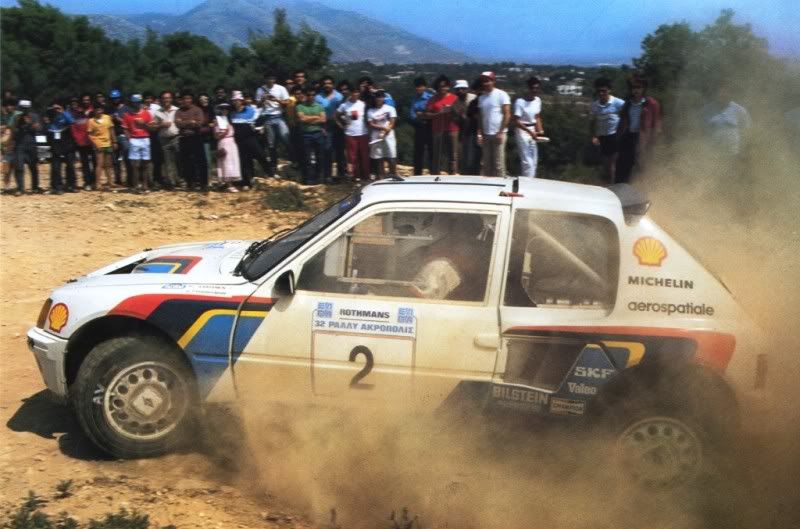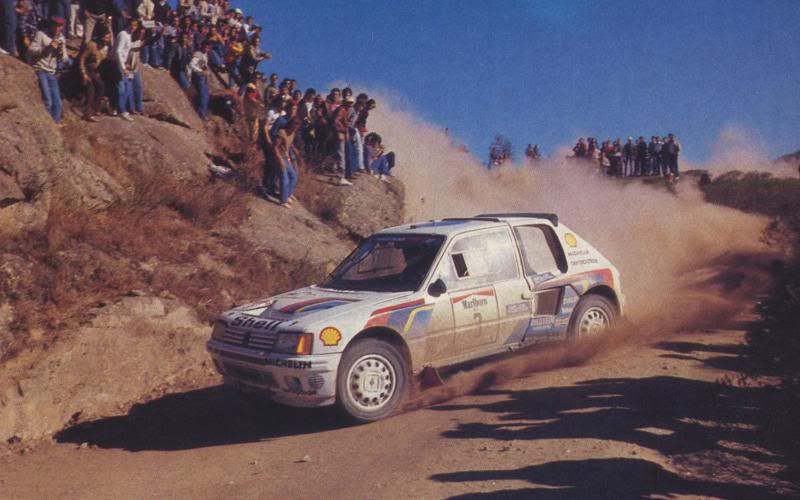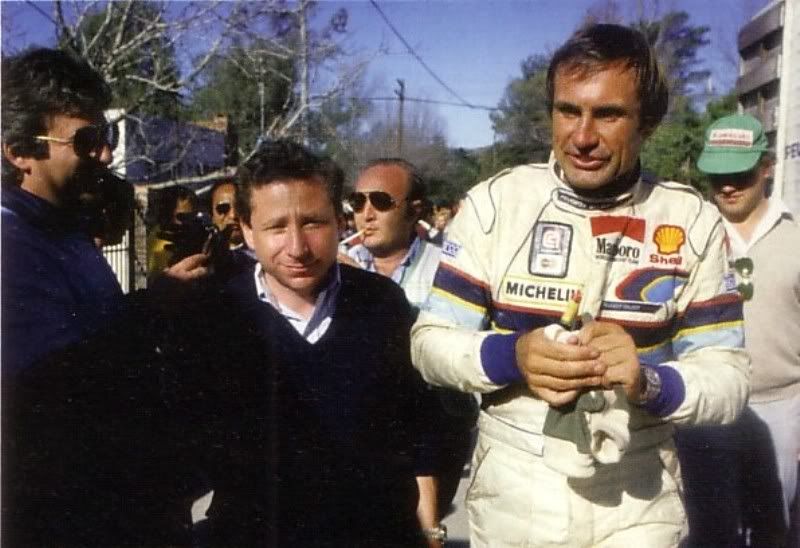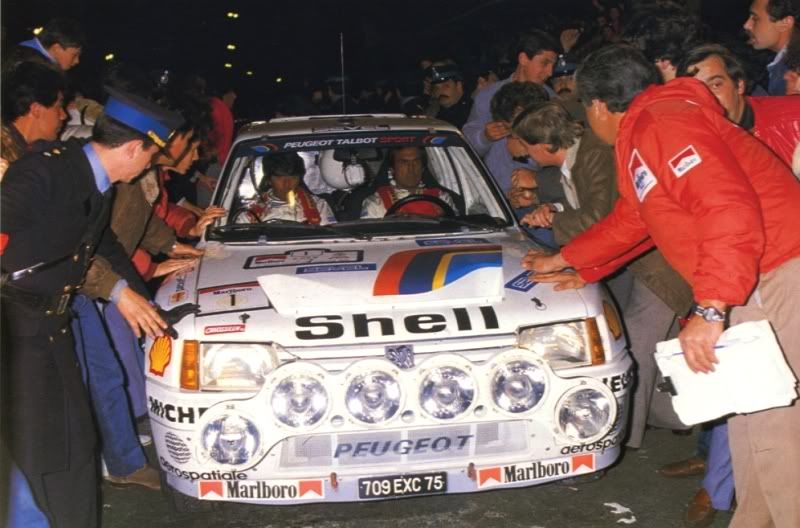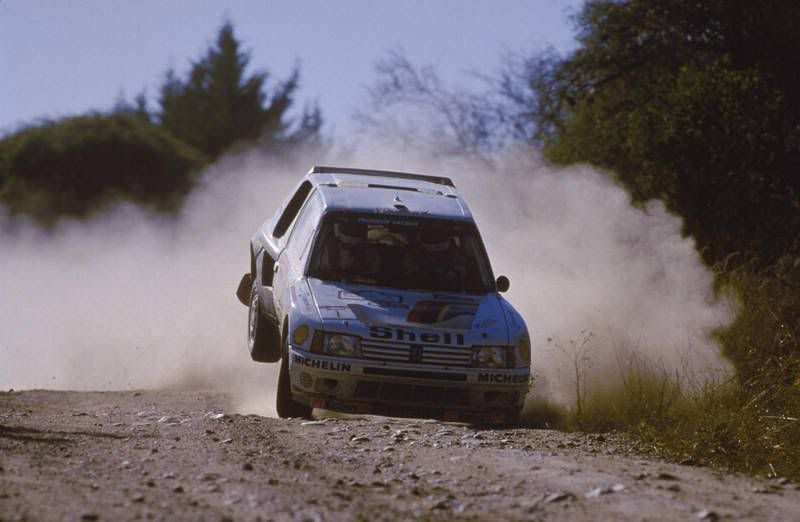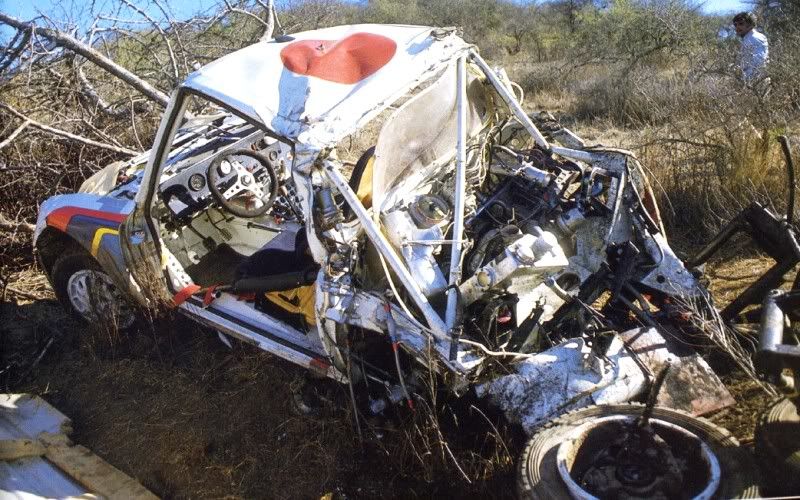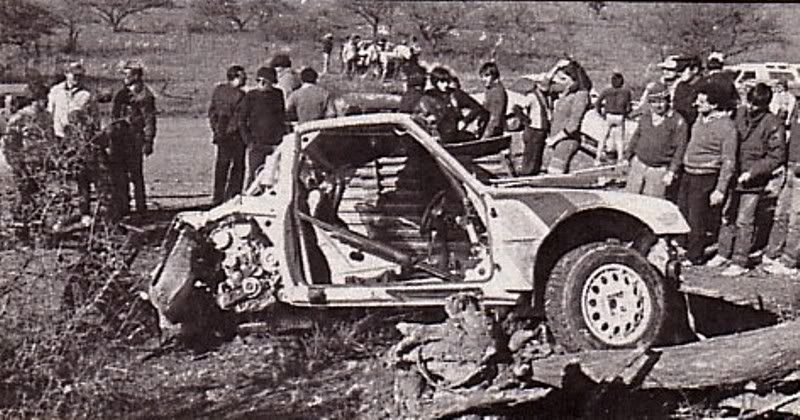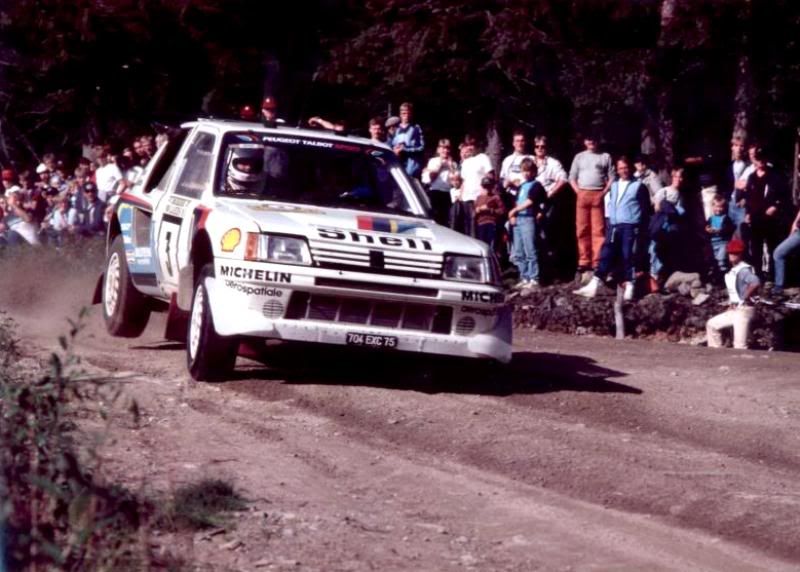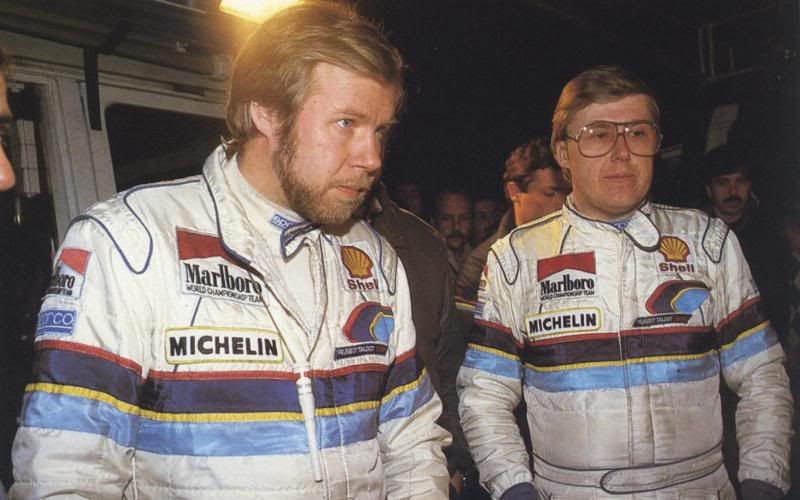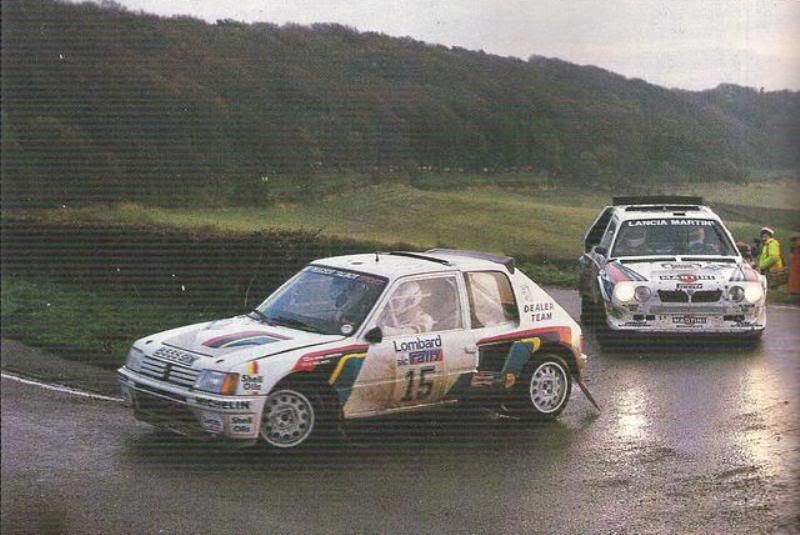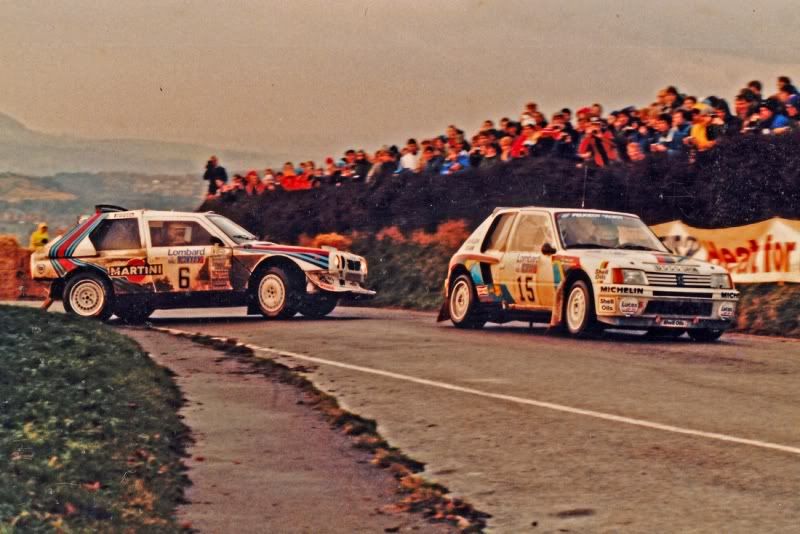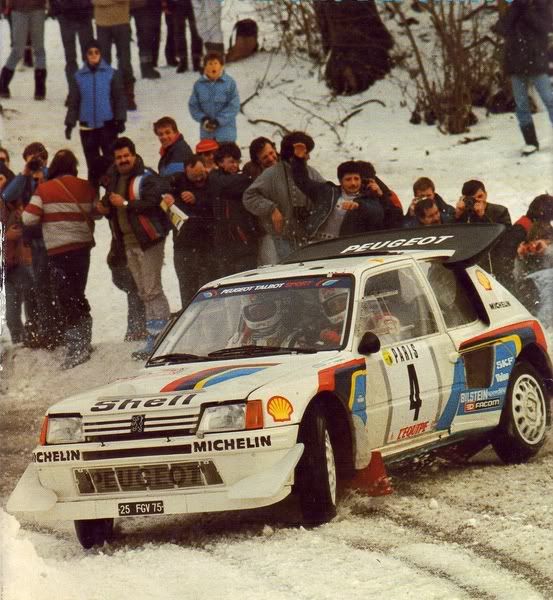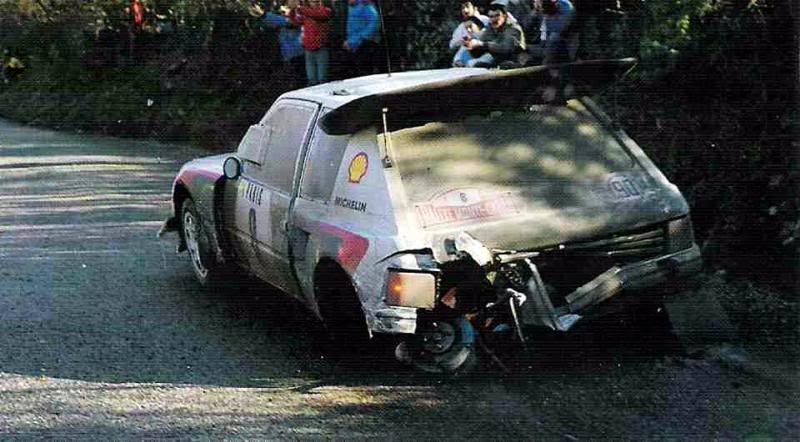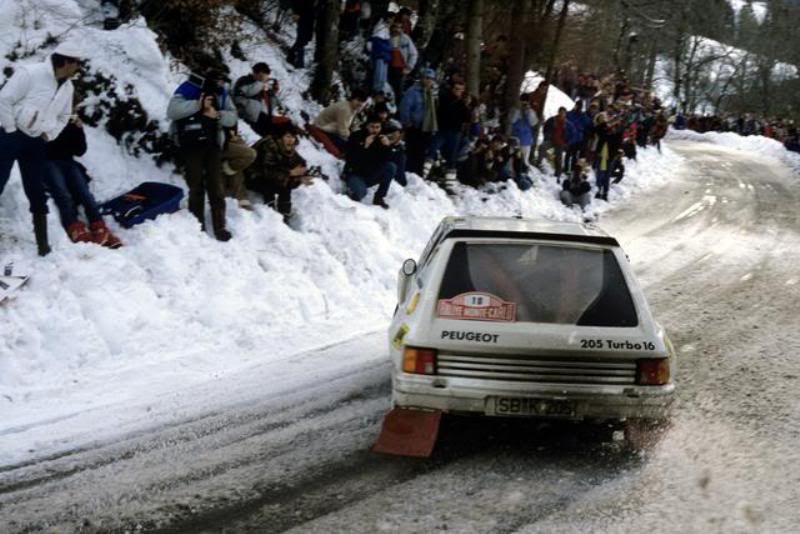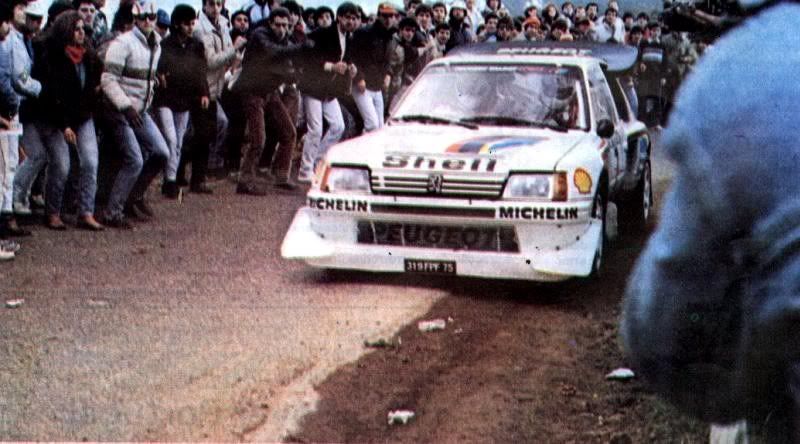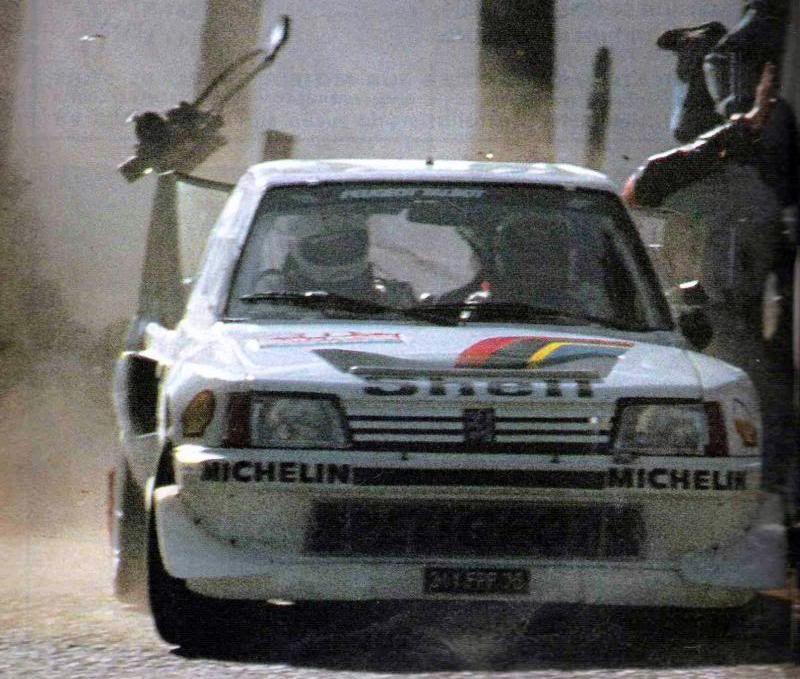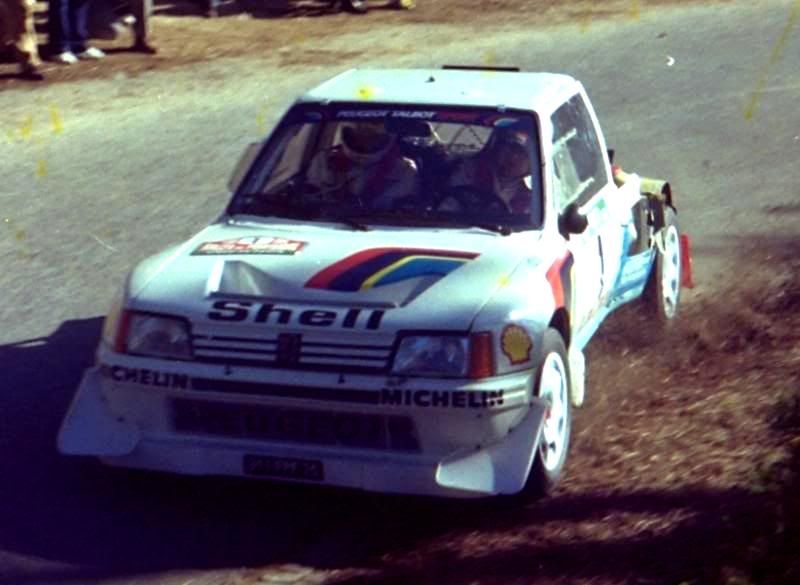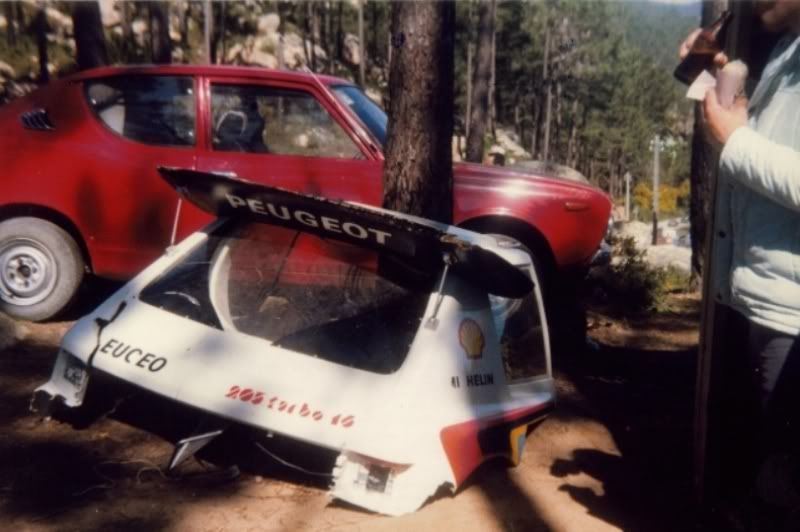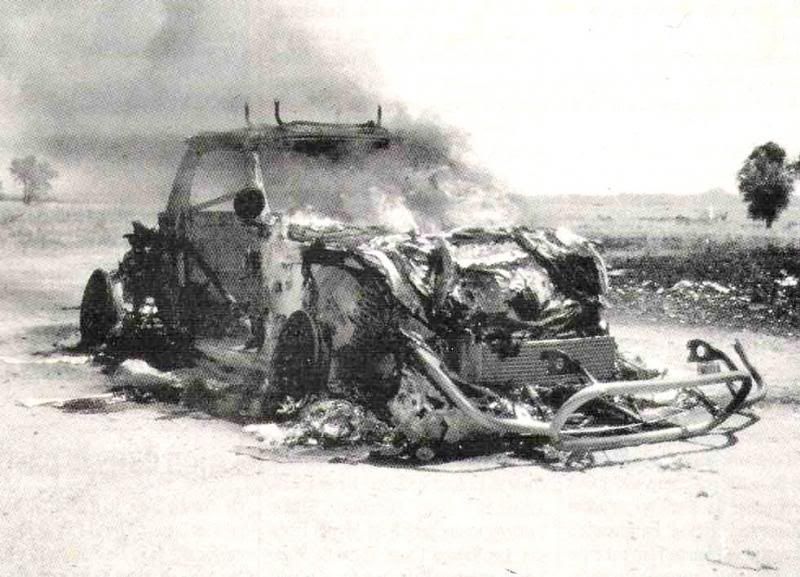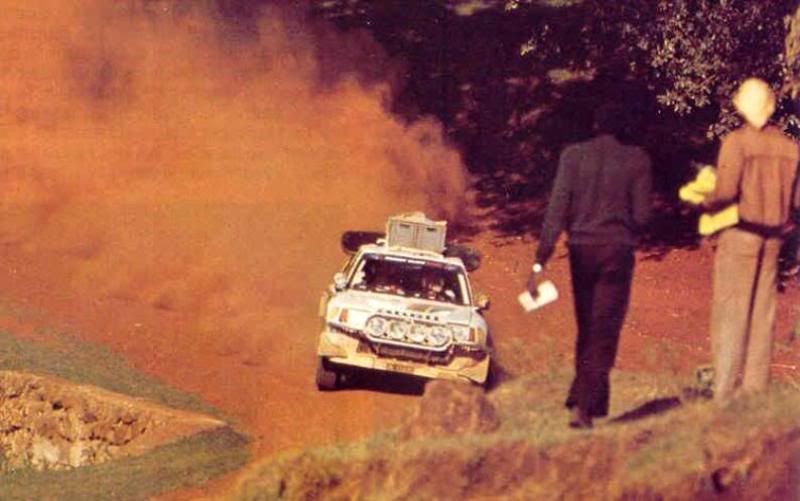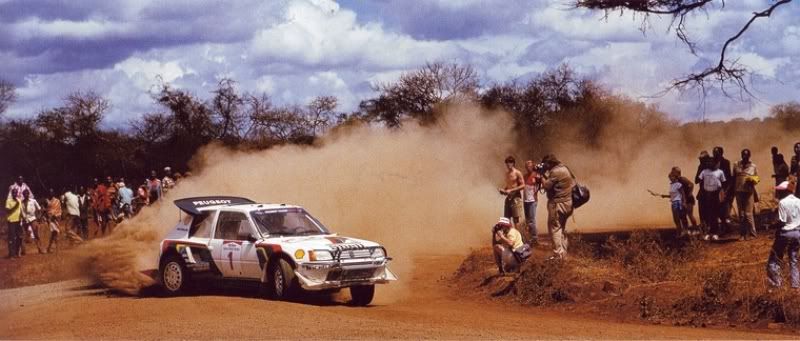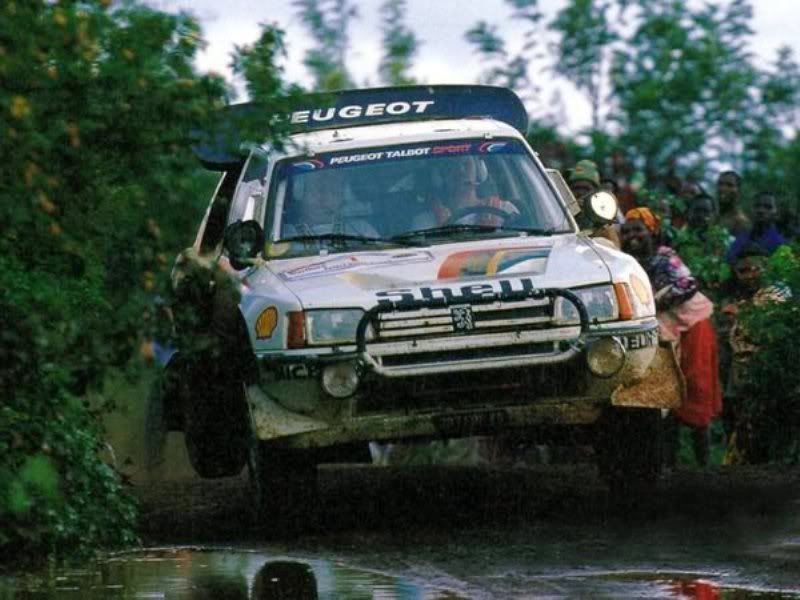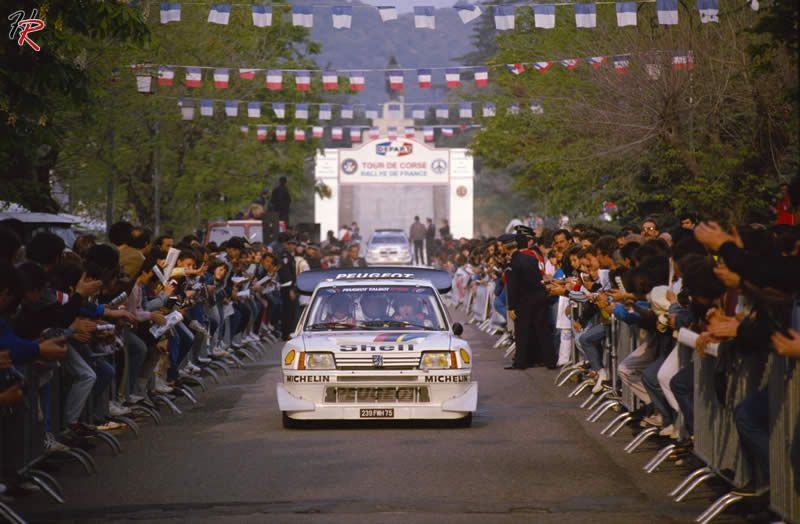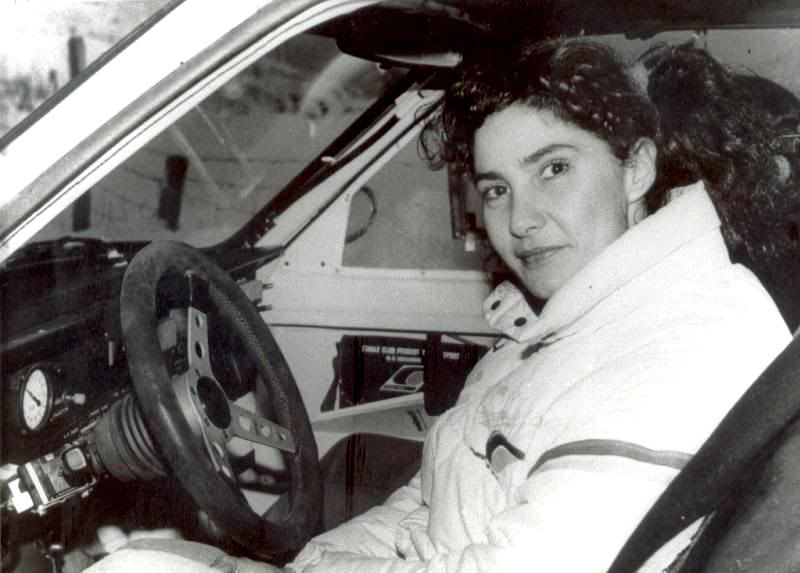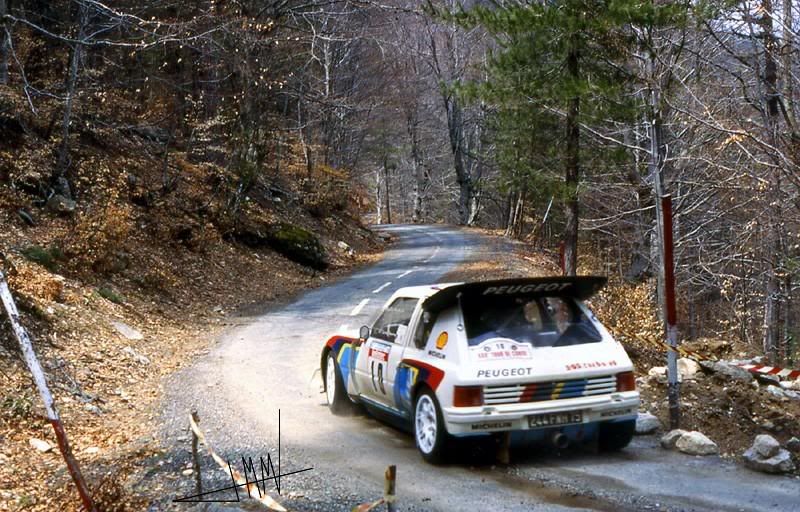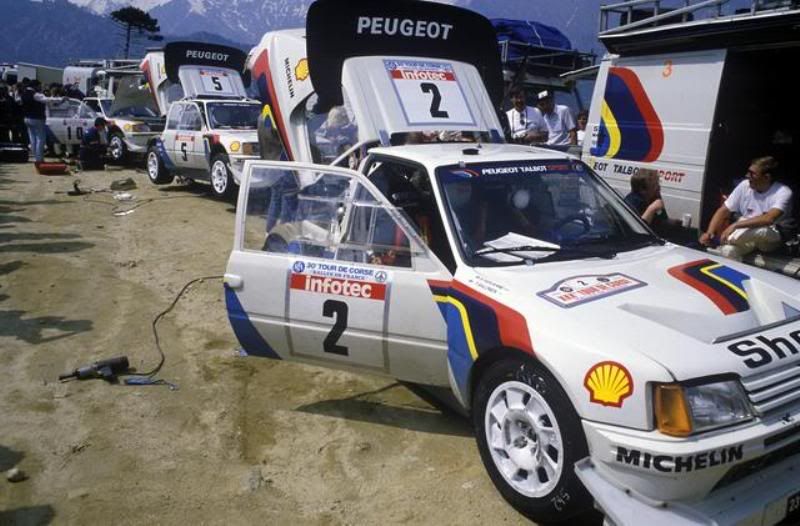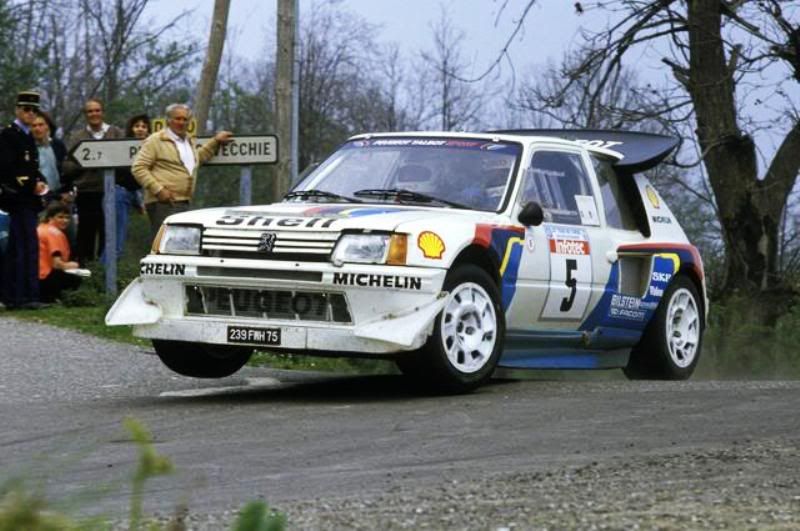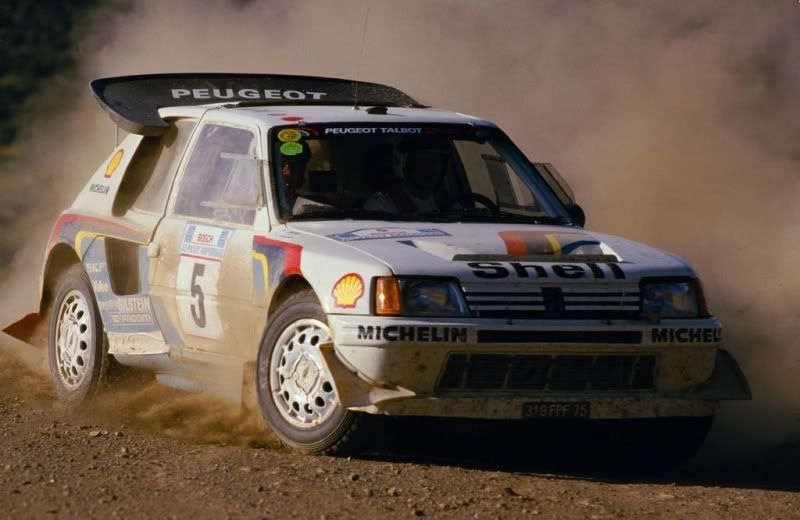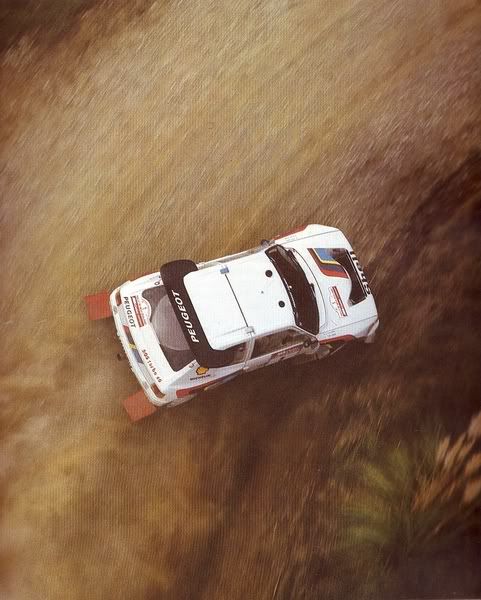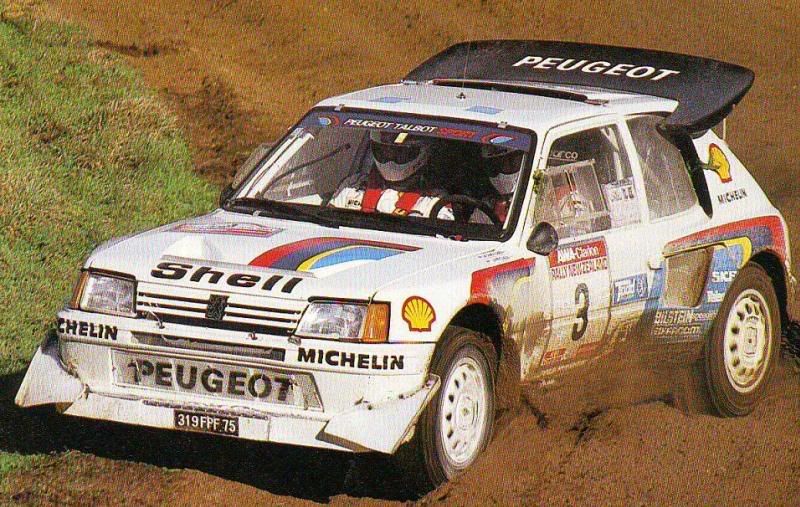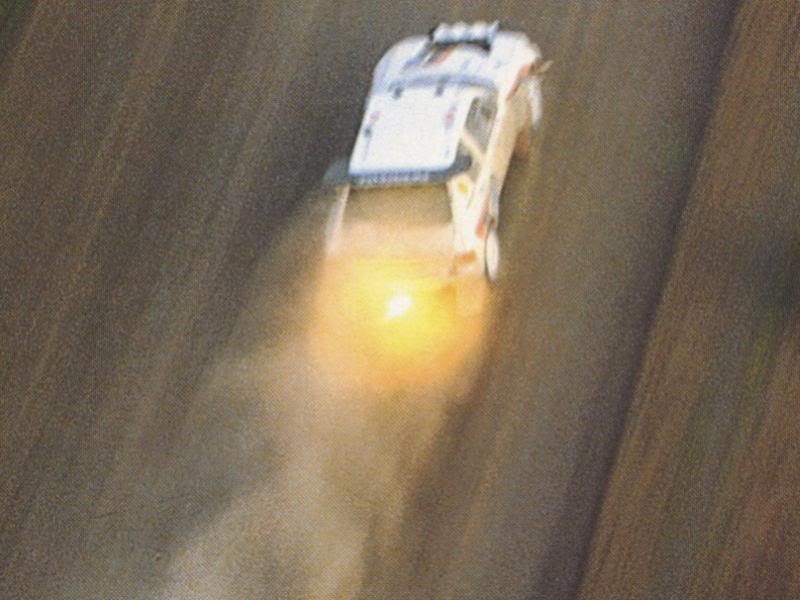1982 saw the launch of what would turn out to be the most spectacular and exciting period in the history of rallying, a new formula was introduced called Group B, car designers were given an almost free hand, a minimum run of 200 cars had to be made, this allowed the use of spaceframe technology and expensive materials.
Arguably the first proper Group B car was the Lancia 037, or to call it by its correct name, the Lancia Rally (037 was its development code number). The car used a mix of glassfibre and Kevlar body panels, titanium rollcage and spaceframe steel chassis. The RWD machine weighed in at 980kg and used a mid-mounted four cylinder supercharged engine, initially producing 260bhp, which was rapidly developed to ultimately produce 325bhp.
The car was homologated in time for the only all tarmac round of the 1982 WRC - The Tour de Corse. One of the most impressive line ups ever seen on a WRC event turned out for the start, Renault had a trio of 5 Turbos for Ragnotti, Therier and Saby, Pozzi - the French Ferrari importer entered two 308 GTB models, including one for Frenchman Jean Claude Andruet, there were also four Porsche 911SC, a BMW M1, three works Quattros, Ascona 400's for Rohrl and Kleint. Lancia brought two cars, one for Markku Alen and another for the Italian driver Attilio Bettega.
Bettega made a good start, initially holding second place behind Andruet's Ferrari.
![Image]()
Ragnotti quickly got to grips with his Renault, taking the lead of the rally by stage 6, this pushed Bettega's Lancia down to third. However, what happened on stage 11 highlighted how potentially dangerous these spaceframe cars could be, Bettega hit a wall, the pedals ended up underneath his seat, breaking his legs badly, it took over half an hour to cut Bettega free from the 037.
![Image]()
Markku Alen finished a somewhat lowly ninth overall in Corsica, retirements followed for Alen in Greece, Finland and Italy, it was not until the RAC Rally in November that he gave the car its first reasonable finish, fourth place. But 1982 was never meant to be anything but a development year for the 037.
Alen on the 1982 Sanremo
![Image]()
Alen finished a respectable fourth on the RAC Rally, he had actually led the rally at one point but dropped back with minor problems. This was the one and only time that Lancia would bring the 037 to the RAC.
![Image]()
For 1983 Lancia signed German ace Walter Rohrl, it was a dream start to the '83 season, Rohrl and Alen taking a 1-2 victory on the Monte Carlo Rally.
Walter Rohrl - Monte Carlo winner 1983
![Image]()
Next Lancia outing was Portugal, Rohrl and Alen finishing 3-4, beaten by the Quattro pairing of Mikkola and Mouton, Lancia and Audi shared the manufacturers lead with 32 points each.
Lancia opted to stay 'out of Africa' and made major preparations for the all tarmac Tour de Corse instead.
When the Italians went rallying back in the 1980's, they did it in force, four Martini cars, from the front No.1 Andruet, No.5 Rohrl, No.14 Bettega (returning to competition exactly one year after that horrific crash) and No. 9 Alen
![Image]()
This was to be the last ever works outing for the legendary pairing of Jean-Claude Andruet and his female co driver "Biche", they had won the first ever WRC event, the 1973 Monte Carlo Rally.
![Image]()
Andruet was out on the second day, water from the cooling system had leaked into the cylinder bores at service, causing the engine to seize.
![Image]()
Drivers share a meal, back then rallies went day and night, so no time to get out of your fireproof suit and enjoy a meal, this would have been a short rest halt and then back to driving flat out.
![Image]()
Lancia took the top four places at the end of the rally, Alen taking a win over Rohrl.
![Image]()
Incredibly Lancia finished 1-2 on the next round in Greece, thanks to various problems which hit the Audi team, this was a big boost to Lancia's manufacturers title hopes.
New Zealand was next, surely here Audi would show Lancia how to go rallying on loose surfaces. But no, the Audi armada all hit trouble. Rohrl took a convincing win.
![Image]()
Rohrl opted out of competing in the next two rounds in Argentina and Finland, Alen took fifth and third respectively in those rallies, each time behind an Audi trail.
Even now, heading into the Sanremo Rally, Lancia had a twelve point lead over Audi. Yet again, the reliability of the Lancia rally cars won the day, the 037 took the top three places in Italy. Lancia were the 1983 Manufacturers Champions. They didn't even bother sending any cars to the final round, the RAC Rally.
Team Lancia during the 1983 Sanremo. This was the end of an era, the last time a 2WD car took the manufacturers title
![Image]()
Arguably the first proper Group B car was the Lancia 037, or to call it by its correct name, the Lancia Rally (037 was its development code number). The car used a mix of glassfibre and Kevlar body panels, titanium rollcage and spaceframe steel chassis. The RWD machine weighed in at 980kg and used a mid-mounted four cylinder supercharged engine, initially producing 260bhp, which was rapidly developed to ultimately produce 325bhp.
The car was homologated in time for the only all tarmac round of the 1982 WRC - The Tour de Corse. One of the most impressive line ups ever seen on a WRC event turned out for the start, Renault had a trio of 5 Turbos for Ragnotti, Therier and Saby, Pozzi - the French Ferrari importer entered two 308 GTB models, including one for Frenchman Jean Claude Andruet, there were also four Porsche 911SC, a BMW M1, three works Quattros, Ascona 400's for Rohrl and Kleint. Lancia brought two cars, one for Markku Alen and another for the Italian driver Attilio Bettega.
Bettega made a good start, initially holding second place behind Andruet's Ferrari.

Ragnotti quickly got to grips with his Renault, taking the lead of the rally by stage 6, this pushed Bettega's Lancia down to third. However, what happened on stage 11 highlighted how potentially dangerous these spaceframe cars could be, Bettega hit a wall, the pedals ended up underneath his seat, breaking his legs badly, it took over half an hour to cut Bettega free from the 037.

Markku Alen finished a somewhat lowly ninth overall in Corsica, retirements followed for Alen in Greece, Finland and Italy, it was not until the RAC Rally in November that he gave the car its first reasonable finish, fourth place. But 1982 was never meant to be anything but a development year for the 037.
Alen on the 1982 Sanremo

Alen finished a respectable fourth on the RAC Rally, he had actually led the rally at one point but dropped back with minor problems. This was the one and only time that Lancia would bring the 037 to the RAC.

For 1983 Lancia signed German ace Walter Rohrl, it was a dream start to the '83 season, Rohrl and Alen taking a 1-2 victory on the Monte Carlo Rally.
Walter Rohrl - Monte Carlo winner 1983

Next Lancia outing was Portugal, Rohrl and Alen finishing 3-4, beaten by the Quattro pairing of Mikkola and Mouton, Lancia and Audi shared the manufacturers lead with 32 points each.
Lancia opted to stay 'out of Africa' and made major preparations for the all tarmac Tour de Corse instead.
When the Italians went rallying back in the 1980's, they did it in force, four Martini cars, from the front No.1 Andruet, No.5 Rohrl, No.14 Bettega (returning to competition exactly one year after that horrific crash) and No. 9 Alen

This was to be the last ever works outing for the legendary pairing of Jean-Claude Andruet and his female co driver "Biche", they had won the first ever WRC event, the 1973 Monte Carlo Rally.

Andruet was out on the second day, water from the cooling system had leaked into the cylinder bores at service, causing the engine to seize.

Drivers share a meal, back then rallies went day and night, so no time to get out of your fireproof suit and enjoy a meal, this would have been a short rest halt and then back to driving flat out.

Lancia took the top four places at the end of the rally, Alen taking a win over Rohrl.

Incredibly Lancia finished 1-2 on the next round in Greece, thanks to various problems which hit the Audi team, this was a big boost to Lancia's manufacturers title hopes.
New Zealand was next, surely here Audi would show Lancia how to go rallying on loose surfaces. But no, the Audi armada all hit trouble. Rohrl took a convincing win.

Rohrl opted out of competing in the next two rounds in Argentina and Finland, Alen took fifth and third respectively in those rallies, each time behind an Audi trail.
Even now, heading into the Sanremo Rally, Lancia had a twelve point lead over Audi. Yet again, the reliability of the Lancia rally cars won the day, the 037 took the top three places in Italy. Lancia were the 1983 Manufacturers Champions. They didn't even bother sending any cars to the final round, the RAC Rally.
Team Lancia during the 1983 Sanremo. This was the end of an era, the last time a 2WD car took the manufacturers title







